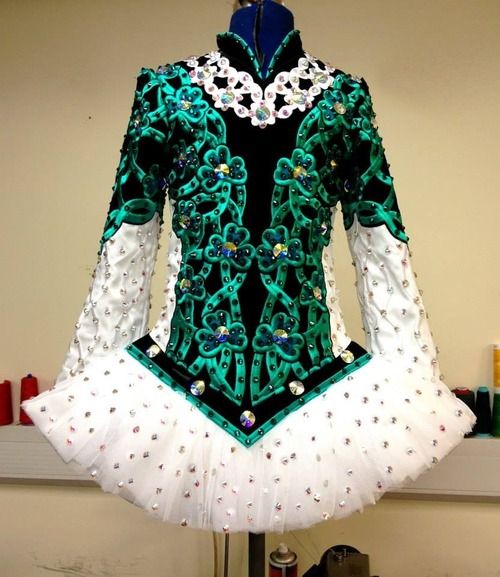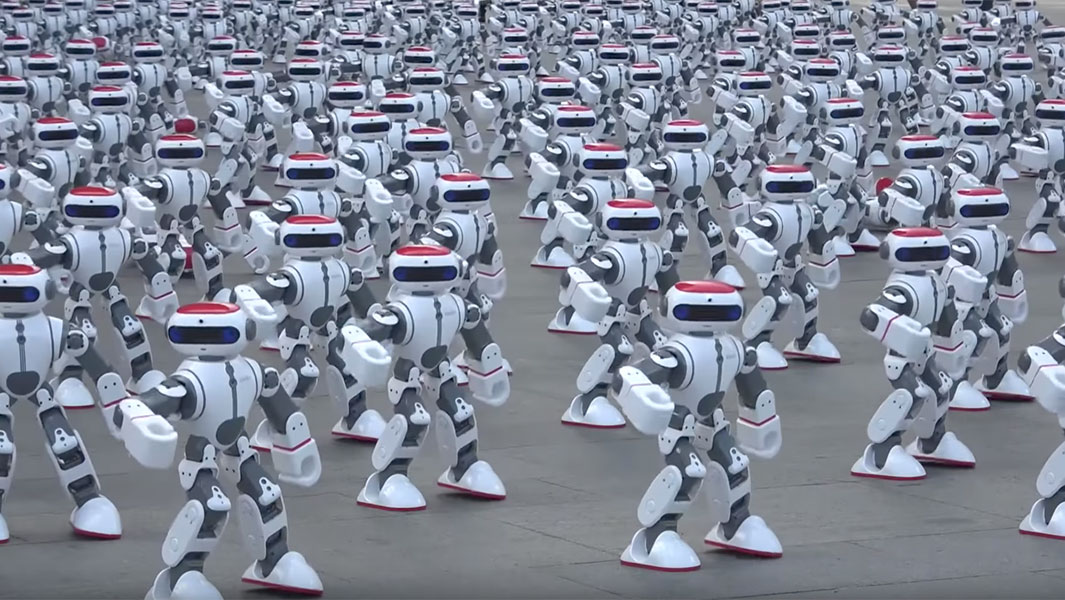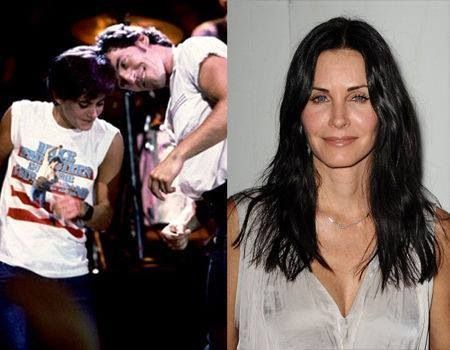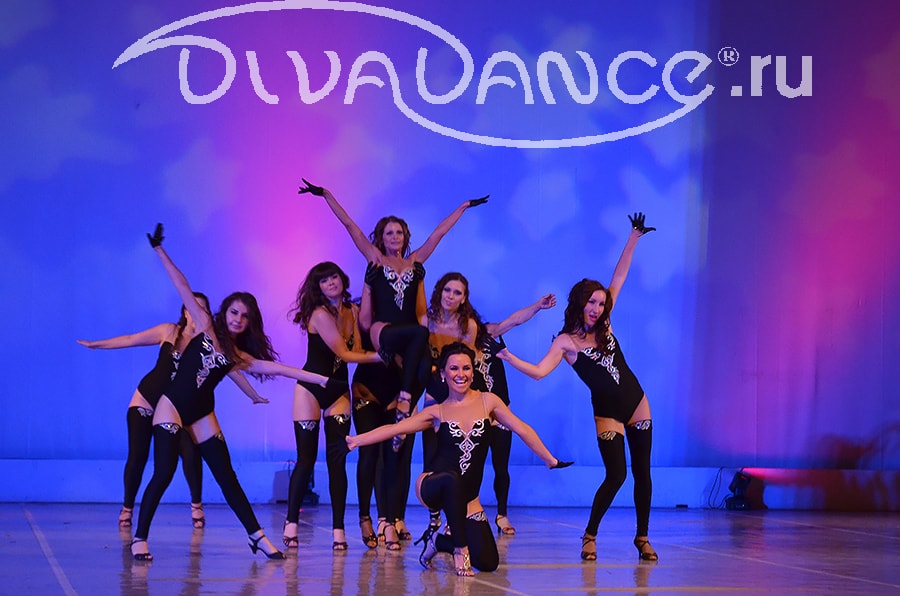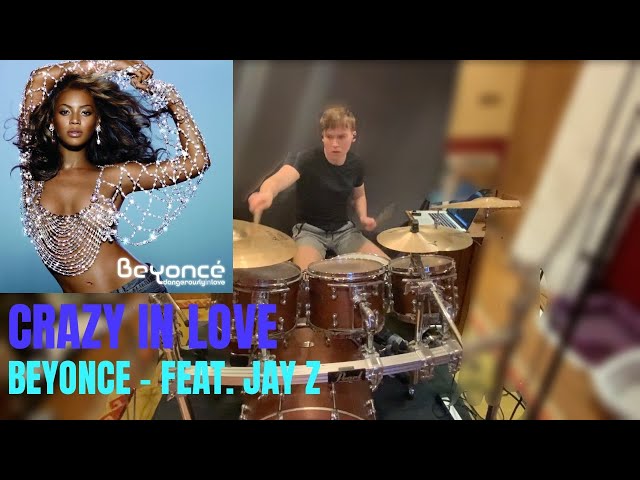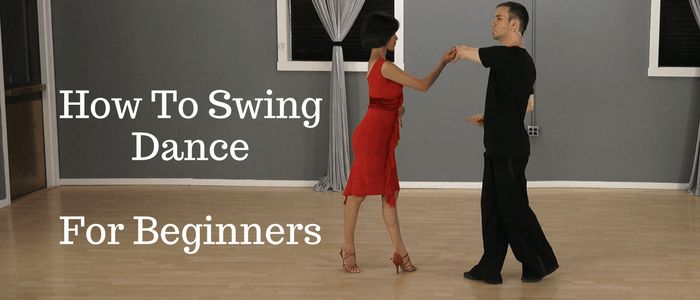How to make an irish dance solo dress
How I made my own Irish dance Solo dress (on a budget)
This sewing project was a special one. It connected two passions of mine: crafts and Irish Dance. It was also complex and long: I split it in two phases, the first one spanning from Winter to May 2019, the second one from Summer 2019 to the beginning of 2020.
After a few years competing at Irish dancing feiseanna, I decided I wanted to make me a proper Solo dress. If never heard about those kind of dresses, you have to know they are intricated, sparkling, decorated, complicated, and also expensive.
Since my husband and I love making things by ourselves, we planned and sewed it together.
Back in 2019 I didn’t have a sewing machine and my only experience with clothes making was my Medieval gown. As I said, Solo dresses are usually complicated, so we said to ourselves we needed a starting point to make things easier: a dress to modify. We started from a 50’s black dress with the perfect shape, but too long and lacking sleeves.
So the plan was: first round, adding sleeves; second round, taking care of the skirt, that needed to be shorter, fuller and less black; final step, decorating the whole dress. I had a basic idea of what I wanted to accomplish, but a few details changed along the way.
Click for the finished project detailed photos
Jump to section
The design and inspirationsThe making of the dressDecorating my Irish dance Solo dressLet’s sum up!
The design and inspirations
The basic sketch I draw as a template for the making of my own Irish dance Solo dress
Before diving into the making itself, let me explain how I conceived the basic idea and design for my own Irish dance solo dress.
I browsed loads of dresses for inspiration, then drew several ideas on basic templates. The one that came out as the winner, was a compromise between what I desidered and what I thought we could be able to accomplish.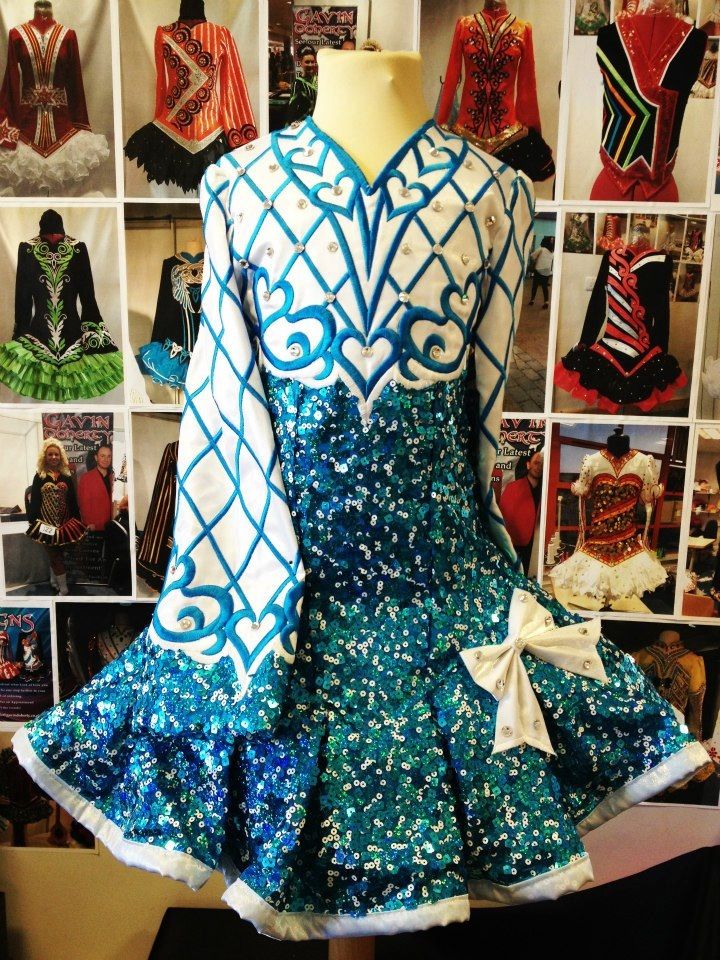
I wanted the dress to be black and emerald green, following the main colors of the skirt we wore at my Irish dance school for beginner solo competitions and team competitions.
Without thinking about the decorations yet, I planned a little collar and skirt with two layers of fabric, the green one emerging from the black one through a series of triangles.
About the sleeves, I drew them in green, while the main body of the dress was black, because I thought finding the perfect matching fabric the exact same color and material would be a tough task. So I decided to make them different from the start.
And just for reference, here I show you the main inspirations I selected for my sketch. Also, a good example of what an Irish dance Solo dress is, for anyone not familiar with them.
I got inspiration for the collar design from a Prime Dress Designs creation. They use this kind of swan-neck collar a lot, and I loved its look.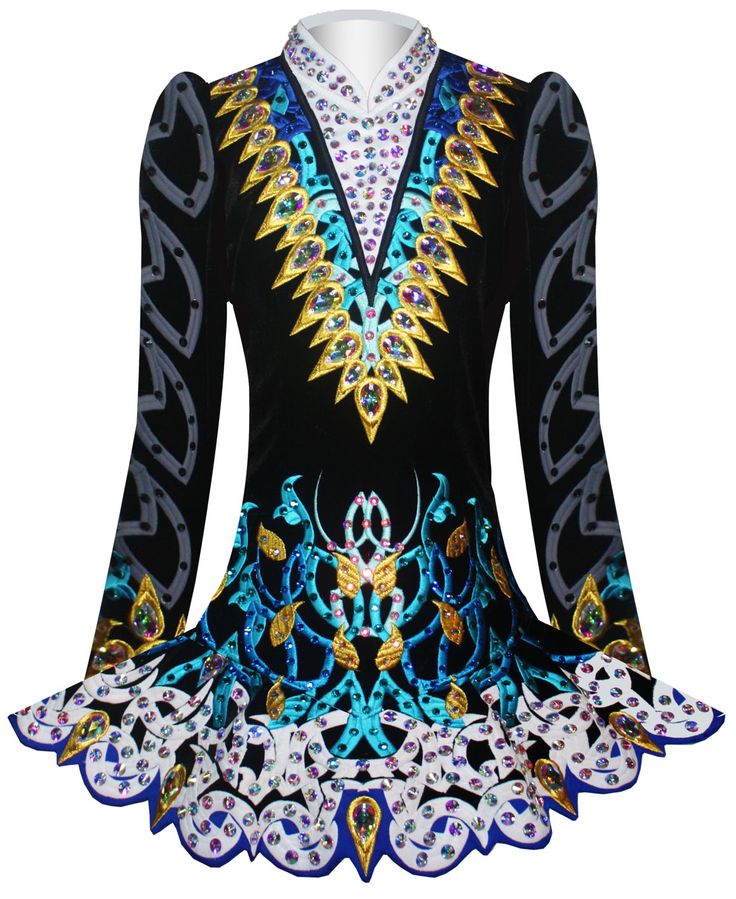
From another of their dresses I picked the idea for the skirt. Well, that’s not a Solo dress, is a school dress, usually worn by members of a team. This skirt has a first layer with cuts, from which it emerges a second layer with a different color. I love this, and I was imagining the effect while dancing.
Also, I found a white and red dress of which I loved the shape of the decorations. On the front there’s a sort of vertical flame decoration that slims the figure a lot. I was thinking about replicating it with embroidery. And a few crystals, since you can’t call Solo dress a dress that has no sparkles!
Some of the Solo dresses around are shinier than a star, but I wanted something more delicate.
Irish dance Solo dress by Prime Dress Designs
The school dress of Slattery School of Irish Dance made by Prime Dress Designs
Irish dance Solo dress by John Carey Design
The making of the dress
To make the sleeves, we first made a pattern with scrap fabric and tried it on the dress.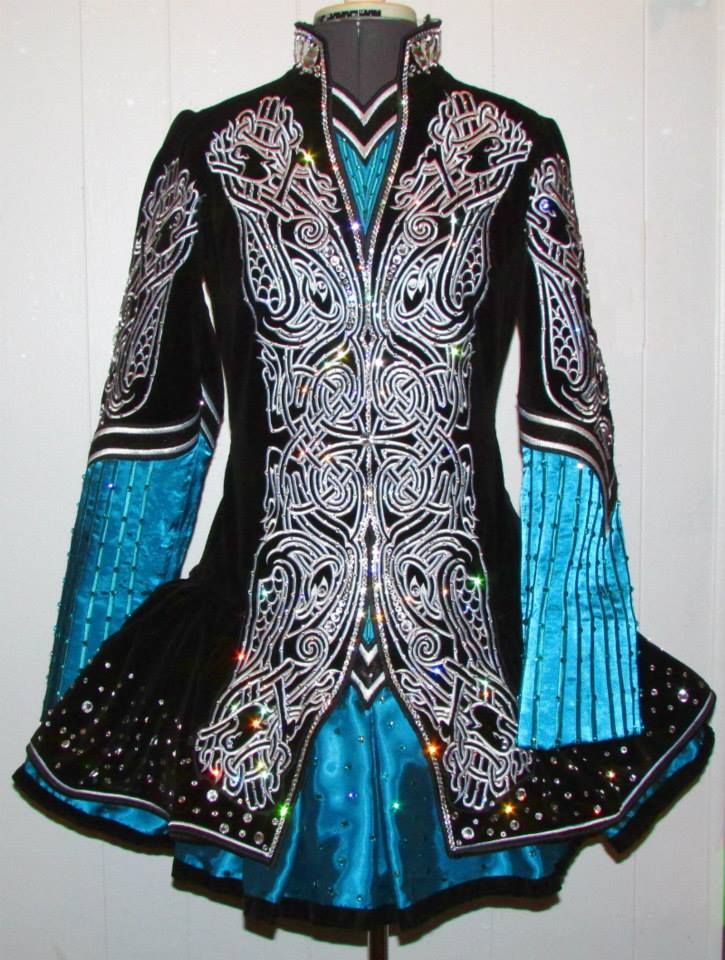 When we did it to make my Medieval gown, it was a really useful step, better than working with paper patterns. Well, this time we were not satisfied with the outcome.
When we did it to make my Medieval gown, it was a really useful step, better than working with paper patterns. Well, this time we were not satisfied with the outcome.
Yes, we knew it would have been the hardest task, but after an evening trying and trying again we almost surrendered, thinking about hiring a proper tailor to make the sleeved for us.
I was beginning to think we wanted to make a project too hard for us, having made just one dress with a 6-months struggle.
Well, the morning after I woke up realising which mistake we were making: we placed the dress on the table and attached the sleeve with a 90° angle! So the following evening we gave it another try, attaching the sleeves with a 45ish° angle and… the sleeves came out perfect! When I saw the sleeves finished I was really thrilled!
We chose a not-so-easy sleeve design, also.
My first plan was to make a basic dress, then decorating it myself with hand-embroidery and appliques.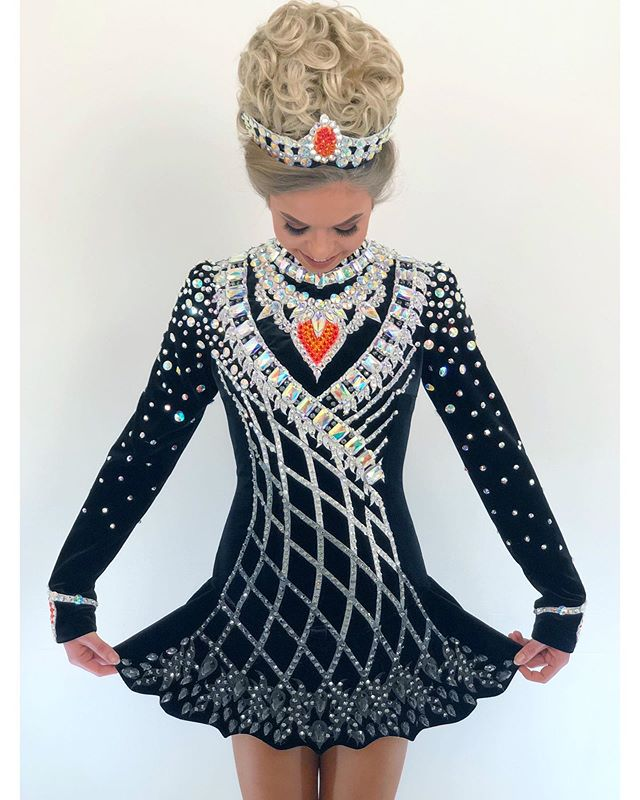 But one day we were browsing our favourite fabric shop for materials and my husband came out with a lovely green lace. The same emerald green I have on my dance school skirt! I fell so in love with it that I completely changed my original design to adapt it to that awesome fabric!
But one day we were browsing our favourite fabric shop for materials and my husband came out with a lovely green lace. The same emerald green I have on my dance school skirt! I fell so in love with it that I completely changed my original design to adapt it to that awesome fabric!
I decided to add black sleeves all covered in that green lace. Then, on the bodice and all the skirt, I wanted to add cut-out pieces of the lace, to form a regular pattern.
So, for the sleeves, we cut two layers, one on in black fabric and one in lace, pinned them together and machine sewed. The advantage was that we could use a light black fabric without having to look for the exact same one that made the main dress, since the lace is the part that stands out.
After attaching the finished sleeves, I picked up needle and thread and began hand sewing all the cuff borders, to fix the lace on the black fabric. It took me a lot of work, but this way I refinished the edges and gave strenght to the whole sleeve.
Next step: taking care of the skirt.
First, we made a green tulle underskirt to give volume and width. The beginning was quite complicated, with three layers of fabric to pin together for sewing. Fortunately I’ve a box full of pins!
Each layer was a little shifted down from the previous one, so the waist was thinner than the lower edge, volume increasing progressively.
Layer by layer, with the help of my sister-in-law, I was able to prepare all the pleated tulle layers for my husband, who machine sewed it to their green lining. The lining was paramount, since I have to wear tights and didn’t want them to get stuck to the tulle: I wanted a softer fabric between my legs and the underskirt.
Following that, we had to join the underskirt to the main dress.
The choice about how to join skirt and underskirt was not straightforward.
The first idea was to sew them together along the waist, but then I begun thinking about how to handle the full dress.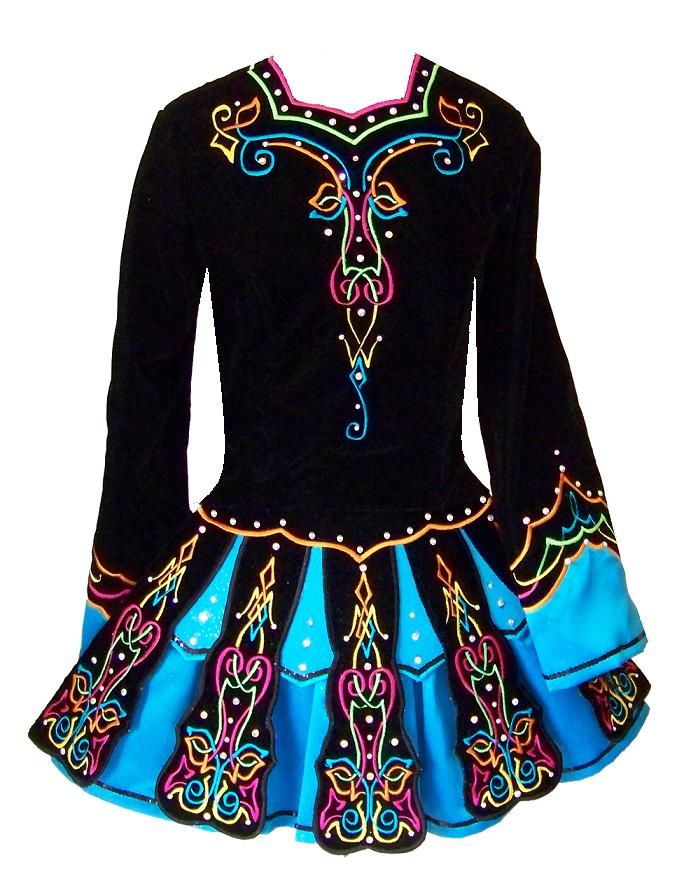 It would certainly be handier with two separated parts, especially when I need to wash it.
It would certainly be handier with two separated parts, especially when I need to wash it.
The question then was: can I secure the underskirt to the dress to make them strongly attached during the dances but easy to separate when needed? In short, the final answer was no. Nor popper buttons or velcro were a good option.
I thought about it a lot, I did researches, asked friends and grannies and, in the end, I dedided the best way to attach them together… was just sewing.
The main issue that made me think a lot about this was the idea of washing the tulle together with the rest of the dress. Well, in the end I decided to set the matter aside and went for the easiest way.
And I’m also happy with the final result because from the outside you don’t see the stitches: I was able to hide them thanks to a thin inner lining the dress has.
Well, the skirt was far from being finished! Next came the part I feared most: cutting!
The dress I chose as a base had a too long skirt for my purpose, so I had to cut.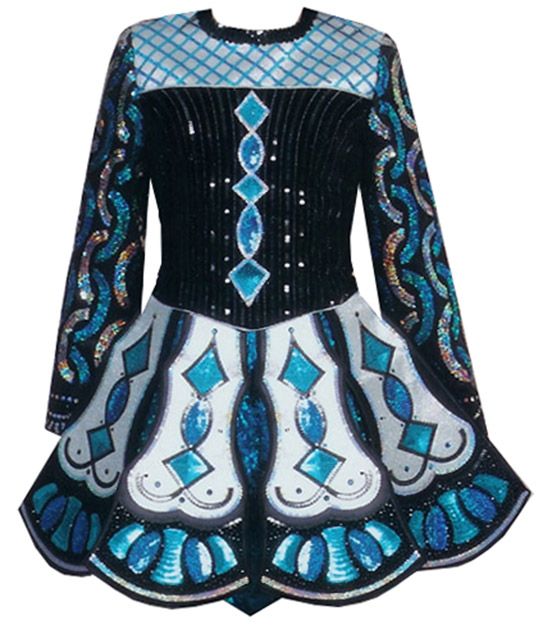 What if I cut too much? What if the final result is not good on me or doesn’t adhere to the competition rules?
What if I cut too much? What if the final result is not good on me or doesn’t adhere to the competition rules?
This is why I first secured the underskirt: to see the real final volume and make a precise cut. I checked the lenght twice, also with the help of my dance teacher and fellow dancers. Even when I made up my mind about the correct lenght, I still feared I could make a mistake and ruin the whole project without repair!
I let my husband do the cut (both of the dress and underskirt with its lining) and, after a lot of worries, we were both satisfied of the result. I even decided it was worth cutting another couple of centimeters, after the first cut. Yes, my husband was right this time: he wanted to cut more from the start!
And, after this cut, I wanted to make things more complicated by adding ten green triangles all around. Not a two-layered skirt with cuts on the top layer as first planned, but a wider one, with colored inserts.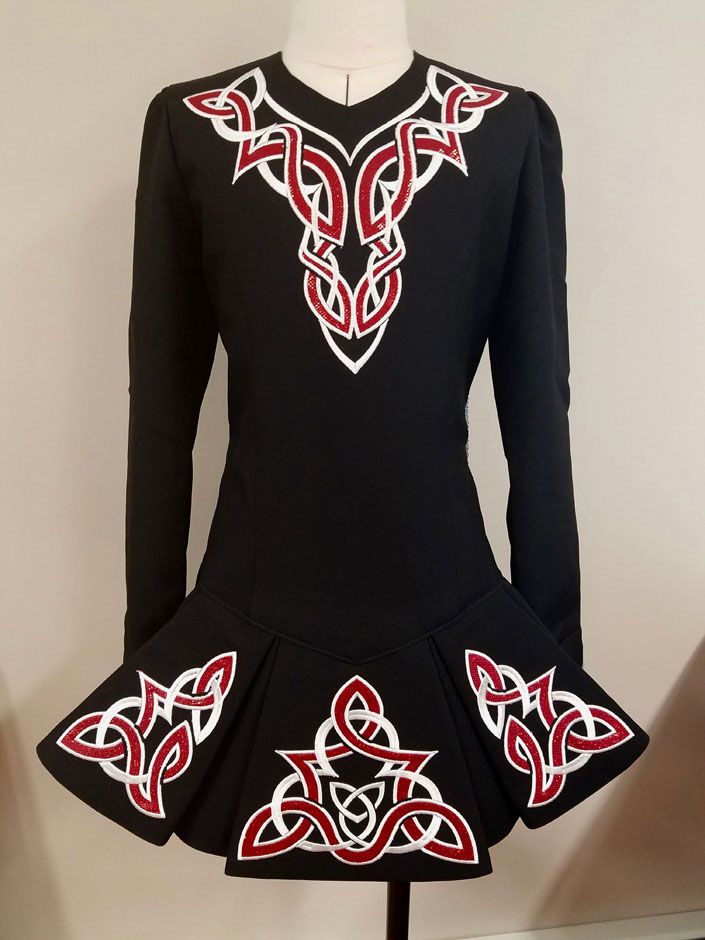
An engineer husband can be useful in ways you can’t suspect! Well, I have to say mine is also the grandson of a seamstress, so he saw a lot about dressmaking in his youth.
We measured ten triangles in green fabric to be added to the black skirt, and all the planning of how to cut and sew was his. First, we made a prototype on scrap fabric, then used it as a pattern.
I carefully basted all of them and loved the outcome! For the machine sewing (mainly because the next dance competition was approaching), we asked my husband’s grandmother for help. She took no time to finish sewing those triangles to my skirt. She also refinished the lenght of the underskirt and lining and sewed the lining hem.
It began to resemble a basic Irish dance dress! But something important was still missing, and that meant my favourite part had come: the decorations!
Decorating my Irish dance Solo dress
When I began the decorations, I literally had to run to be able to wear the dress during the upcoming feis.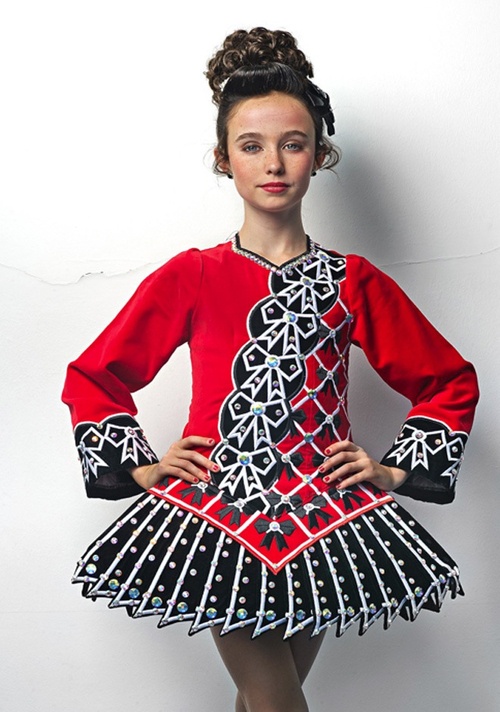 I wanted to add all the green decors to the bodice and skirt, just to dance at the competition with a dress that wasn’t totally black.
I wanted to add all the green decors to the bodice and skirt, just to dance at the competition with a dress that wasn’t totally black.
Seeing the dress in front of me at that stage, I changed my original mind about handembroidery. I wanted to go on with the same lace used on the sleeves. I love it so much that I thought it wasn’t worth spending endless time with another kind of hand decoration.
So I carefully cut out single pieces of green decorations to add where the dress was too black. I positioned them on the dress, took photos, reexamined them over and over with my husband, changed several times how much I wanted to add and where.
The first goal, just for the competition ahead, was to add a bit of green where it lacked color, then complete the decorations later, after the end of the competition season.
I handsewed all the green lace. And I was more than careful doing that! I strongly stitched every single twist and turn and curl, leaving no place unstitched.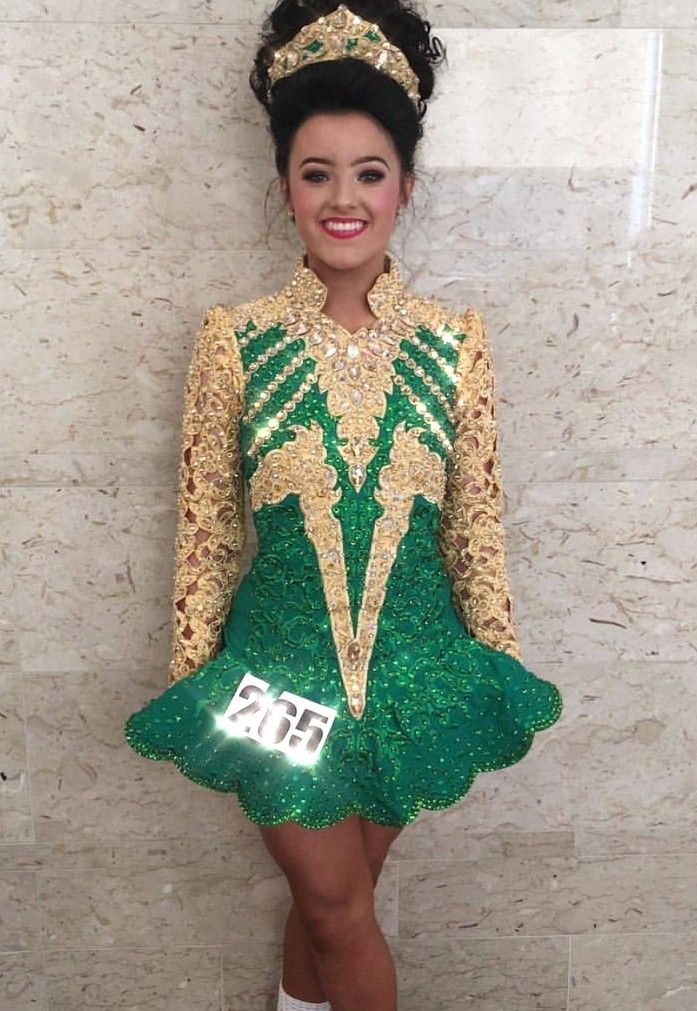 The main goal was to make the dress and its decorations sturdy and strong to resist even the most daring dance.
The main goal was to make the dress and its decorations sturdy and strong to resist even the most daring dance.
Finally, in May 2019 I was able to wear my Irish dance Solo dress for the first time! It was comfortable, it behaved just like I imagined it. And it gave me a more “professional” look next to more traditional dresses than the class skirt and t-shirt I used to wear.
I had time just to sew the green lace to the bodice, I had to leave the skirt all black. Well, I have to say I was glad the work was not finished yet! I enjoyed a lot working on my dress.
It came out quite different from the dress I drew and planned. I renounced the swan collar because my basic dress had a straight neckline, and I did like it in the end. The lace was the main reason my dress came out as it is, and I’m glad I’ve found it at the fabric store.
After the end of the 2019 competition season, I had my plan to finish adding the green lace to the skirt and then adding sparkles.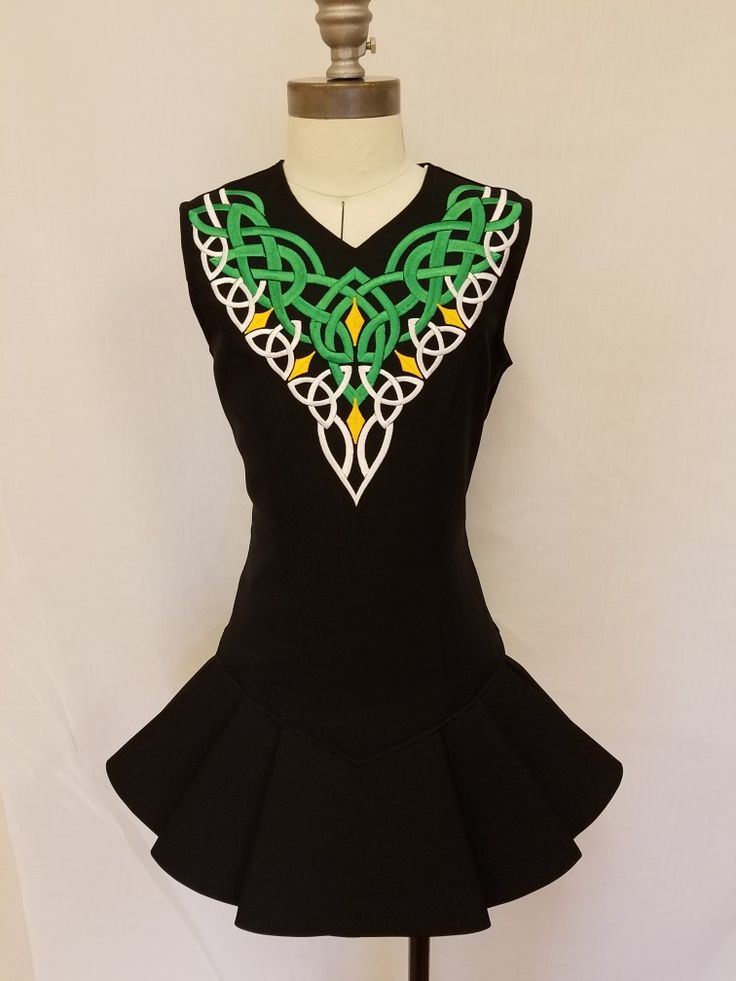 They are so ubiquitous in Irish dance, I couldn’t go without.
They are so ubiquitous in Irish dance, I couldn’t go without.
About the skirt, I had metres and metres of stitching to make to attach the green lace all around. A seemingly endless work! But this is the part I longed for most, so I enjoyed each single step, being careful in all my hand stitching.
My lace had lovely triangular patterns that were perfect to cut-out and the right size to cover the fabric. I chose the triangles close to the lace edge, so I could use its own border to refinish the lower edge of my dress.
I had ten black triangles to cover, about a couple of metres wide in total at the edge, but in the end I decided I liked the skirt with alternate triangles, one black and one with lace. Nonetheless, every single piece of it needed to be strongly attached with resistant stitches, so the task was about three months long!
I stitched all along the edge of the lace, following each single leaf and flower. I wanted the decoration to be as sturdy as possible.
I wanted the decoration to be as sturdy as possible.
Besides the long had-stitching, with my husband’s help and the suggestions from my Feis friend Alessia, who was going on with a similar dress project, I was browsing around for sparkles to add all around.
Thinking about sparkles, the new doubt was: should I glue them or sew them?
There’s a whole world behind it I never imagined! Glueing or sewing was just the first choice. I had no idea that such a huge world was behind crystals for dance dresses! With my Feis friend I learnt a lot about sizes, glue, brands, shapes, colors… I quickly felt dizzy!
In the end, I chose the sew on kind: a cabochon with four holes gave me the idea of being more stable.
I went for the classic white crystals, instead of the colored ones. I decided to buy one pack of the SS12 size (3mm), to begin. They were so many to stitch! But I had no fear of the job in hand: that was exactly what I was looking for, a new excuse for hand-stitching!
What I needed to do next, was planning where to place them.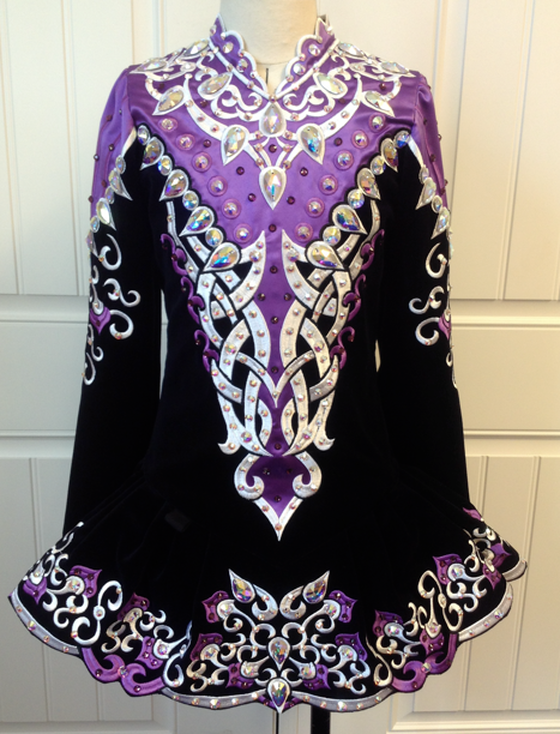
Another long step was awaiting me, I didn’t know if as long as the lace part or even more.
My first idea was to sew them only on the lace, but my husband saidys that, on the sleeves, it would be better if I placed them all around, also on the black fabric.
I tried and I have to say my husband was right. I decided to cover all the sleeves with a uniform grid of sparkles, then sew more on the lace of the skirt. I drew a grid with each rhinestone 8cm apart from the next ones. That was just to begin: I told me that, if I found they were not enough, I could add more in the middle.
At first I thought the sewing would have been harder. The hardest part, mainly at the beginning, was keeping the two fabrics of my sleeve evenly together, to keep the sleeve smooth while adding one crystal after the other. I had to be careful placing each crystal in place and keeping where it was intended to stay.
Also, following a regular grid was not so easy: I had to consider the position of each rhinestone keeping watch of all the surrounding ones, were they already in place or not.
Well, as always, going on with practice makes you quicker and helps a lot finding the right way to complete your work.
After finishing the sleeves, I decided to move on to the skirt. I wanted to see the rhinestones all around the dress before deciding if the quantity was good.
I expected the sewing to be even quicker on the skirt, because I had just one layer of fabric and I didn’t have to plunge into a tight space as the sleeve is. Also, I chose not to stick to a regular grid.
Here the plan was to give each triangle with lace its own touch of sparkle. Then, to refinish the look, I planned to sew sparkles also on the bodice.
Well, as soon as I saw the triangles completed with just 10 crystals each, I thought it better to redouble them. First of all, though, I wanted to refinish the front, so I could have a glimpse of the final look of all the dress.
I knew for certain, at this stage, that I needed to add more crystals everywhere to achieve the effect I was looking for.
At the end of the crystal sewing on the bodice, I was ready to start over, adding more sparlkes everywhere on my dress.
When I began the sewing, I thought the crystals I planned to use were enough, but the more I went on, the more I saw I needed more. Not too much, though, I have always been careful not to overdo. Paying attention not to exaggerate was better than repenting at the end of a long work.
Let's sum up!
And… after a very long sewing process, my Irish dance Solo dress was finally completed!
Wearing it during the 2019 Busto Feis competition was incredible. I was stunned thinking I was wearing it finished, after a long work that, from start to finish, lasted for a year and a half. Also, I felt at ease among the other dancers, with their colorful and shiny dresses.
That day, after the competition, I decided I didn’t want to add anything else to my dress: for now, I am totally satisfied with the result.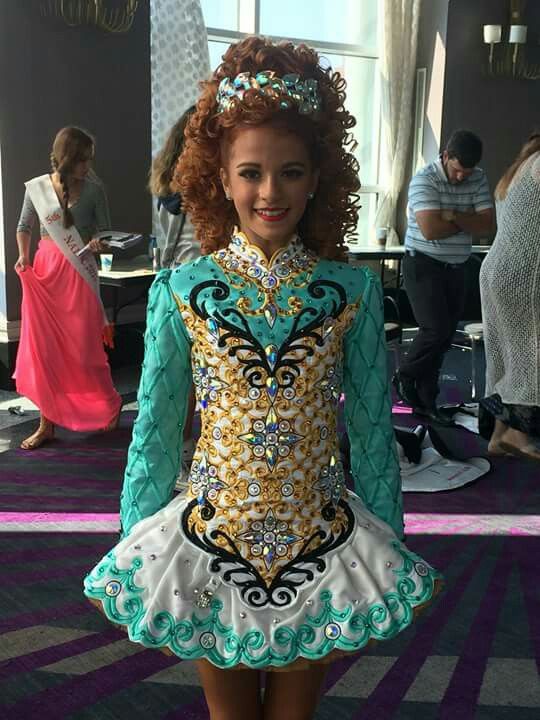
Well, I have to say I’m also sorry the project has finished. It’s been funny and rewarding!
Almost three years after, I sometimes wonder what I would do differently if I had to start over now. I gained more experience with the sewing machine, so I suppose I would go without a basic dress to modify, but I would start from scratch, with just fabric and floss. About the outcome, I would change nothing!
A choice that could be different now? Maybe the main color but… that’s a story for another time!
And you? What do you think about it? Let’s discuss together!
Skirt and Irish Dance Pattern
The dances remain popular. Dancing teachers, dance troupes and even dance competitions like the Irish style of dancing. Unfortunately, if you are making your own Irish style dance skirt the pattern makers may not have kept up with the demand. Often these dance patterns are out of print.
Finding new Irish dance dresses can be expensive They may cost over $2,000 with used running at about $800 or more. To help you overcome those high costs you can find a dance pattern at Sew Irish for about $10.
To help you overcome those high costs you can find a dance pattern at Sew Irish for about $10.
To learn more about Irish dance patterns and skirts just continue to read our article. It does the research so you can save time and find the right pattern for your next dance event.
Irish Sewing Patterns 101
Sewing Patterns for Irish Dance Dresses
Irish Dance Dress Bag Pattern
Irish Skirt Pattern
What are Irish Dance Dresses Called?
What are Irish Dance Dresses Made Of?
How Much do Irish Dance Dresses Cost?
Why are Irish Dance Dresses so Expensive?
How to Measure Irish Dance Dress
How to Sew Irish Dance Dress
Some Final Words
Sewing Patterns for Irish Dance Dresses
Trying to find Irish dance patterns is not always an easy task to do. Some times you may have to adjust or alter a Burda pattern to fit the requirements for your new Irish skirt. You can find one of those Burda patterns at Simplicity.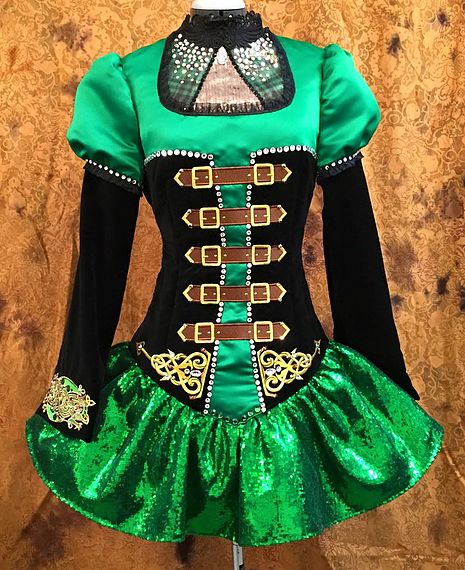 The cost of this pattern is about $9.
The cost of this pattern is about $9.
Then you can try the Pinterest web page. It has a variety of patterns to choose from. Their cost will range depending on the style and complicated design of the costume pattern. There should be over 50 patterns to look through and see if they meet what you need.
Then there is Guna Rince. A company that specializes in Irish Dance patterns. They have recently expanded their line and launched a new website to accommodate all of their customers.
While you may not want to shop at Feis Dresses as their line of new Irish dance skirts can be somewhat expensive. They do have a very good web page detailing current scams that some of their clients have run into. The warning helps make you aware of what is going on so you can prepare yourself.
Irish Dance Dress Bag Pattern
Your search for an Irish dance dress bag pattern can begin at Pinterest. It has a fine selection of different patterns that you may be able to use. There is a fine set of instructions to make your Irish dance dress bag at dance. net. It has a little picture followed by a detailed list of instructions to guide you through the process.
net. It has a little picture followed by a detailed list of instructions to guide you through the process.
Guna Rince has some patterns for dress bags as well. You can reach their selection by clicking on this link. that page comes with PDF files for you to download and use at your leisure. The cost is only $13.
Then you can always check Amazon but their selection is more of new dress bags for a modest price. If you want to get one new bag and use it as a pattern maker then you can try Etsy. They have a large selection of Irish dance dress bags on sale mixed in with other accessories.
If those sources do not carry what you are looking for, you can always go to your local fabric store and see what patterns for dress bags they have available. Or you can talk to the members of the many different sewing discussion forums and see what leads they can provide you.
Irish Skirt Pattern
One of the problems with finding an Irish dance skirt pattern is that many of them have gone out of print. You can find the older ones through different auction houses or even estate and yard sales.
You can find the older ones through different auction houses or even estate and yard sales.
If you are determined to save some money and make your own be prepared to pay a little more for the materials involved as well as investing more time than your other sewing projects. Some sew it yourself Irish dance skirt projects can still cost you a lot of money.
Of course, the simpler the design the less you will have to pay. But if the skirt is for a competition then expect to pay more for all the intricate details you have to add to the fabric.
Simplicity used to have a pattern but they no longer make it. Irish Threads was another location but a search for their website turned up no results. You can try to reach them through their Facebook page and see what they have to offer.
The key to making an Irish dance skirt is deciding on what color and design are going to be the best one to use.
What are Irish Dance Dresses Called?
The language surrounding Irish dancing, dresses, and competitions is different than one would expect when going to a dance competition.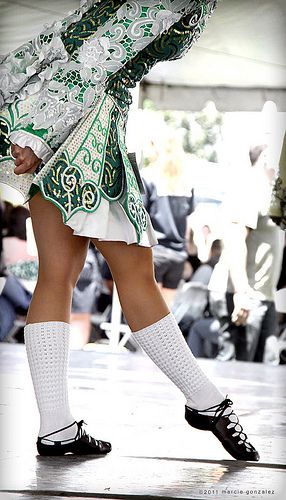 In fact, it is not called a competition at all. It is called a feis, pronounced as fesh.
In fact, it is not called a competition at all. It is called a feis, pronounced as fesh.
If there is more than one feis going on, then you would be attending a feiseanna. These events can be held in just about any location. The same attitude continues through the costume you or your child has to wear.
The Irish dance dress is called a solo dress or solo dresses. Their socks are called poodle socks and their shoes are named ghillies, which is pronounced with a hard G and a silent H.
When you attend or are entered into an Irish dance feis you are literally entering a whole new world that is not the same as other dance competitions. Even the names teachers and judges are not used. Instead, the teachers are called Teasgicoir Choimisiuin Le Rinci Gaelacha while the word judges are replaced by Ard Diploma Choimisiuin Le Rinci Gaelacha.
Those are tongue twisters. It is an interesting world to be involved with.
What are Irish Dance Dresses Made Of?
Over the years the fabrics Irish dance dressmakers use has changed.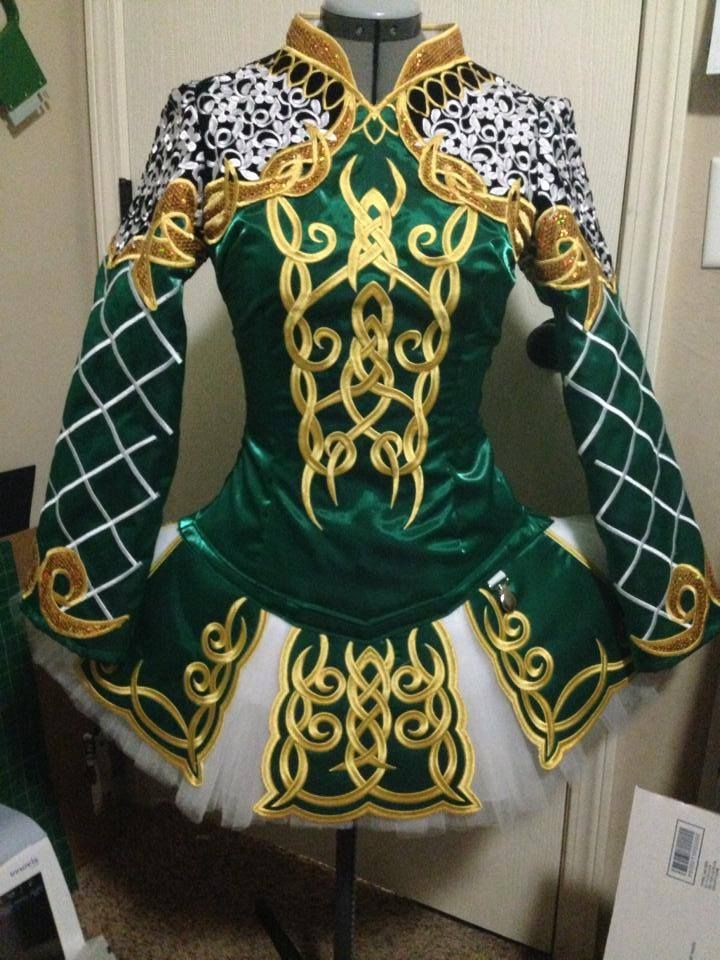 In the early years, the dresses were made from velvet and had a lot of knotworks added to liven up the costume.
In the early years, the dresses were made from velvet and had a lot of knotworks added to liven up the costume.
In more recent years, these dressmakers have opted for lighter fabrics like silk. They have also gotten away from knotwork and added sequins and bright colors to make the dress more attractive and have it stand out more.
Now it seems that velvet is making a comeback but the added bling remains as even the poodle socks get some attractive accessories to brighten their look. Generally, the rule of thumb is that only 3 colors are used at most when creating a dress.
But then that is not always a standard some dressmakers hold to. You may find some Irish dance dresses made with more than 3 colors. There are also a lot of geometric shapes and patterns that are repeated.
Now you may design a dress the way you want it to look but if you or your child are a member of a team, those design decisions should already be made for you.
How Much do Irish Dance Dresses Cost?
You are not going to find a really good Irish dance dress at Wal Mart or Target type stores.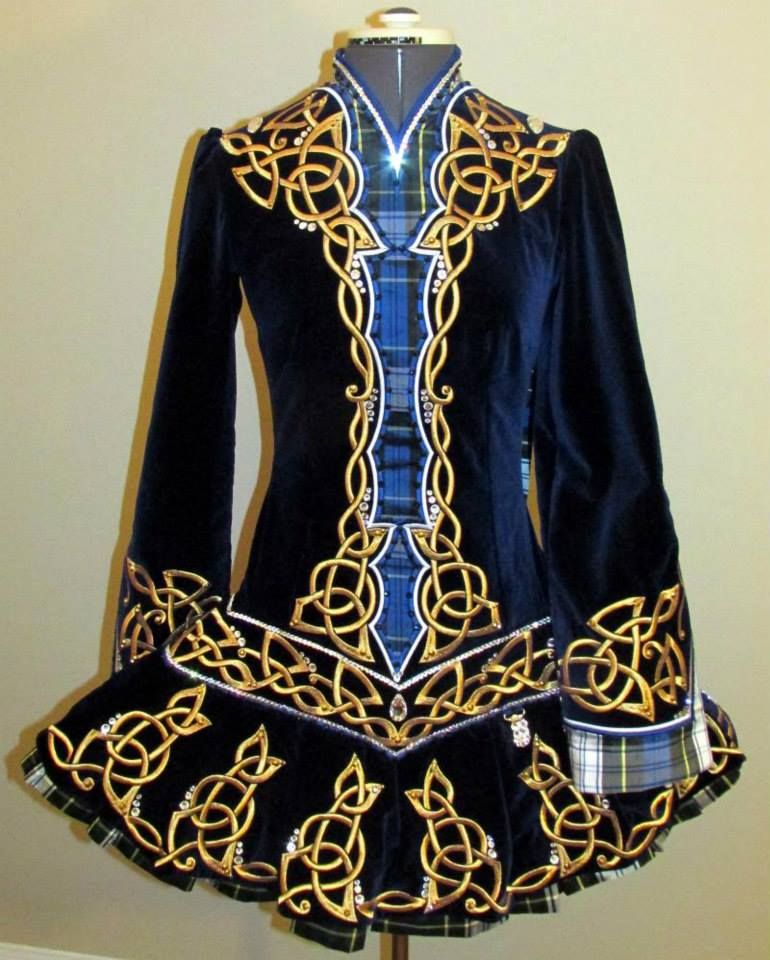 If you do then you should question the quality of the dress and not expect it to last very long.
If you do then you should question the quality of the dress and not expect it to last very long.
The cost of the dress will depend a lot on how much work will go into creating it. You can find some at Feis Dresses for over $2000 and some for just over $1000. other locations also have high prices on their Irish Dance dresses because of the quality of materials.
Then the price will be determined by the city you live in, the demand for the dress and so on. If you want a nice Irish Dance dress then expect to pay a lot for it. You can find used dresses but their cost will also be high. Some start at $500 and go up from there.
Why are Irish Dance Dresses so Expensive?
One reason for their high expense will be the fabric used in creating them. If the dressmaker uses silk or some other expensive light fabric, then the silk alone will drive the cost up significantly.
The other main reason is the amount of intricate design that is attached to the fabric. If you want a decorative, complicated design then the dressmaker will have to spend several days applying the sequins and other accessories.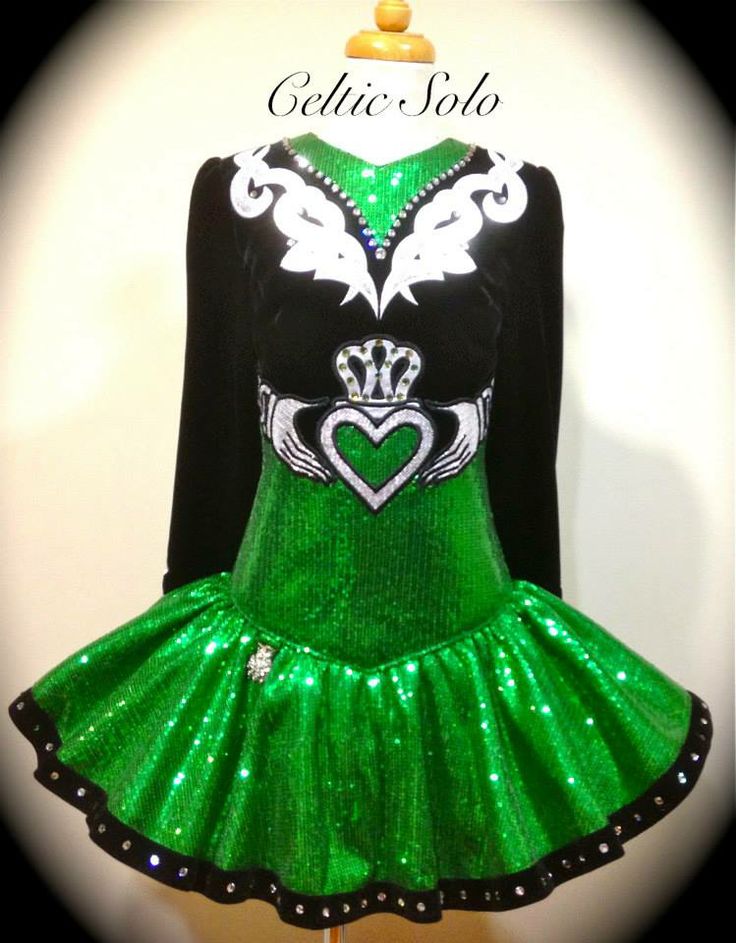 This time will drive the cost up just in labor alone. Not to mention the cost of the embellishments.
This time will drive the cost up just in labor alone. Not to mention the cost of the embellishments.
Some minor reasons that keep the cost of the Irish Dance dress high are the city yo live in. Some cities have a high cost of living and that will include fabrics and embellishments as well as labor costs.
Then the demand for the dress will influence the price. If there is a lot of demand then the cost will go up, if not you may be lucky and get a price break. Finally, the store you buy it at may inflate the price due to their reputation, quality of craftsmanship and so on.
How to Measure Irish Dance Dress
When you go to take the measurements for the dress you can do like you would for any dress. The key is to make sure you measure carefully, especially if the dress you are making is for a young child that still has lots of growth in them.
When you are making the dress for a young child make sure to make it a little larger than the measurements call for. This adjustment leaves room for any growth your child may have while using the dress.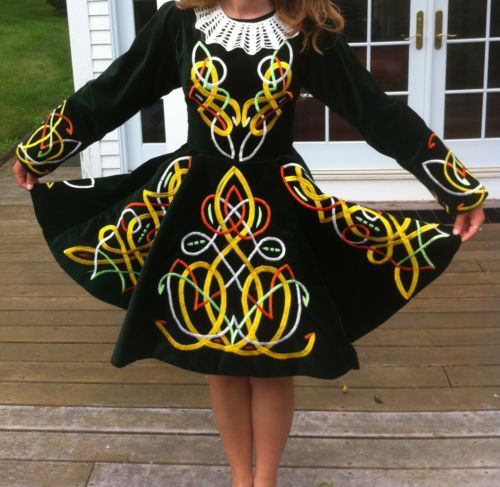
You want to do this because even making the dress yourself can cost you hundreds of dollars and you do not want to have to spend that much money any time soon. Also, adding a little stretch to the fabric will help with your child’s movements keeping her comfortable throughout their dance.
There is a rule of thumb that is used in other industries that apply to sewing Irish dresses and other clothing items. It goes- measure twice, cut once. When you are dealing with expensive fabrics you want to be sure you made the right cuts.
How to Sew Irish Dance Dress
These dresses are not only expensive to make they are also complicated items to produce. You will need a lot of patience as it will take you a lot of time and maybe cause you to use a few words you hate to use.
Once you get your pattern and fabric, you want to use the wrong side of the fabric to make your cuts. Then cut out all the pieces of the dress at the same time. Make sure to label them as you go so you do not get confused and lose a piece.
Before you start sewing the different pieces together, you should consider sewing the embellishments on first. The pieces are easier to handle at this point than they would be if you waited till after connecting the different sections of the dress.
Cotton interfacing is a good fabric to use when you are using a stretchy material to create the dress. Then start with the side seams to begin putting the dress together. After that attach the bodice and then the arms.
Once those are attached you need to attach the zipper. You might try an open-ended zipper as they work well on these types of dresses. When you are done with that part of the dress attach the collar.
As you attach the bodice to the skirt start with the front panel then move on from there till the zipper is attached. At this point, you can add a brooch or other accessories you want the dress to have.
Some Final Words
Even though Irish dances are not out of style, some Irish dance dress patterns are.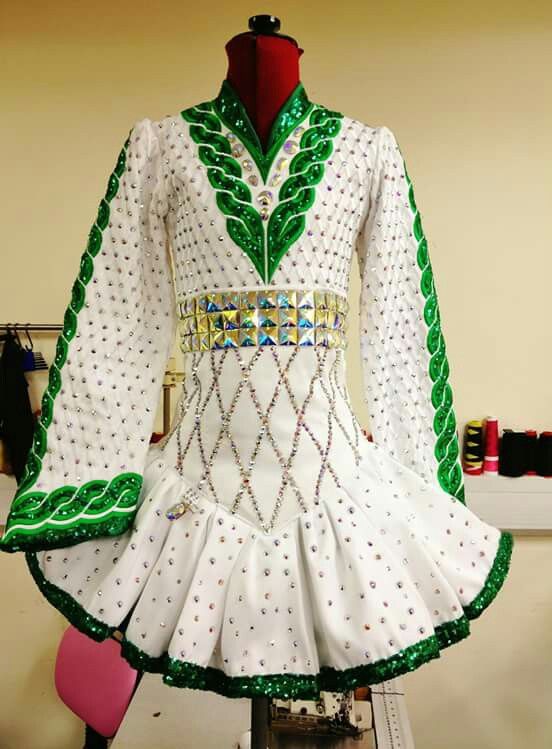 It may be a little difficult finding the right pattern that you need. But don’t despair, other dress patterns can be altered enough to meet your project’s demands.
It may be a little difficult finding the right pattern that you need. But don’t despair, other dress patterns can be altered enough to meet your project’s demands.
All you need to do is look in the right places. Once you get the pattern, just make sure you have the budget for the fabric and the embellishments. Patterns are cheap the rest is not.
Irish dance solo dress how to sew. Irish national costume. From folk clothes to national costume
Irish dance solo dress how to sew. Irish national costume. From folk clothes to national costume
Since Irish dances are slightly less than entirely made up of girls, naturally, the market for tailoring and selling fine dresses for consumer goods developed no less actively than the dances themselves.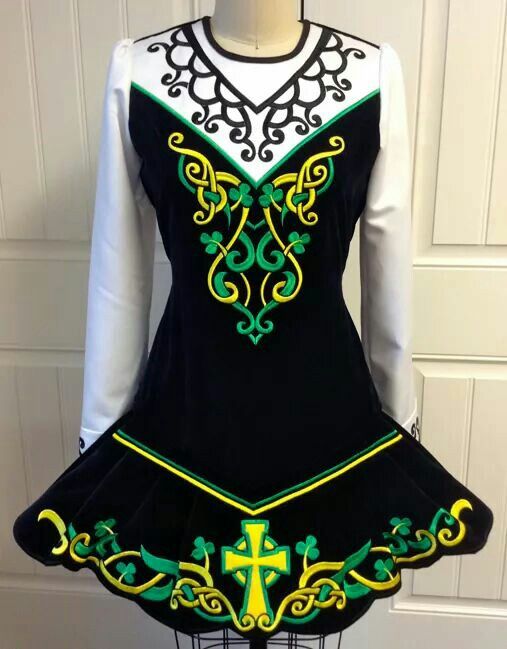 Sorry, not in the same direction.
Sorry, not in the same direction.
What wonderful costumes they used to make:
Or here’s a simpler costume, but also neat, warm and lamp-like, evoking only positive emotions:
Or, incredibly neat and aesthetically pleasing, you want to come up and run your hand over this pleated accordion , take a closer look at the pattern on the chest:
Of course, there were also simpler children's options for a more modest wallet, altered from some overcoats, but simplicity is not bad:
And then something suddenly went wrong. Either all the old designers suddenly returned home to Mars, or something else, but for some reason the situation has changed dramatically for the worse. And every year the locomotive of design picked up speed, rushing down the slope of the mountain of good taste.
At the beginning there were some indistinct crafts made of cheap materials, some incomprehensible kaleidoscope of colors:
It was all quite a long time ago, and there was a lull for some time.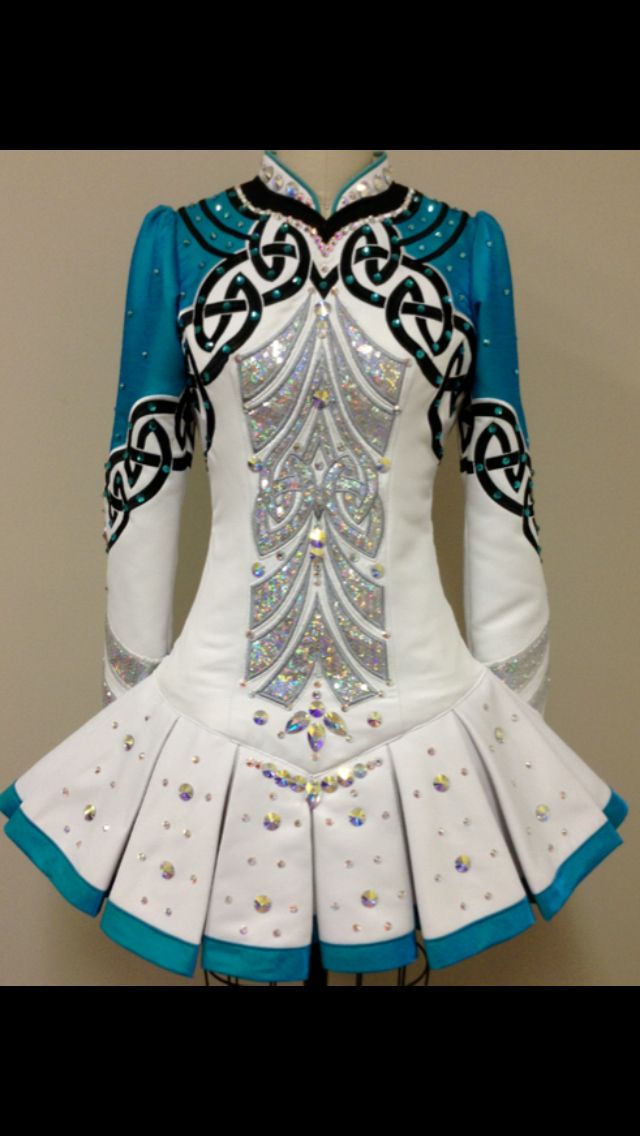 When I started dancing, most of the dresses looked like the last two photos above. And then the United States and Ireland discovered the Chinese market for fabrics and rhinestones, and a few more tons of coal were thrown into the infernal furnace, which is still burning, it seems that a chain reaction has already begun.
When I started dancing, most of the dresses looked like the last two photos above. And then the United States and Ireland discovered the Chinese market for fabrics and rhinestones, and a few more tons of coal were thrown into the infernal furnace, which is still burning, it seems that a chain reaction has already begun.
There is a VKontakte group Irimoda, where Aldoshina, in her free time from stealing my domains, collects the most hellish star, which only the dress tailoring industry produces. Well, at least that's what I tell myself. Sometimes reposts from there slip through my feed, I wipe away bloody tears and think, for example: “What kind of dress is this to emphasize pumped up chest and shoulders?”
Or, a pimp's dream:
And here is a video where dancers dance well, but we don't care about dancing today, we are interested in fashion. We look at a boy with a pink belly and a pink backpack behind his back, dancing in the middle.
Sometimes it seems to me that they order: "Make me a suit!" According to the old tradition of all fashion sellers, it is not customary to return money for low-quality goods.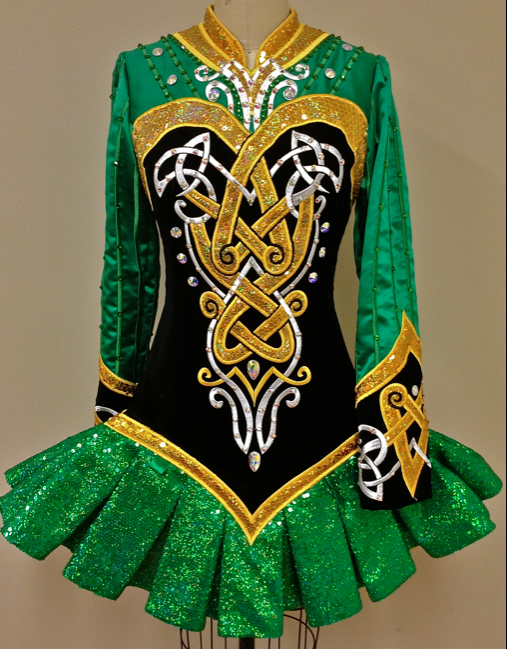 So they dance, pretending that this is a great art.
So they dance, pretending that this is a great art.
How much Dontsova and Malysheva need to smoke for it to start to seem acceptable:
Why injure the psyche of children like that?
They didn't teach them at school why a zebra has such a coloring:
Just a scribe:
Kill me:
Do you want big shoulders and arms, like Arnie's?
What is the check in the center and on the sleeves? Louis Wooton bag cut open? Why can't you stop when everything is already good?
Well, to discuss paraphernalia is generally a thankless task. The students must be delighted. They will grow up and become designers.
Kolkhoz, of course, from everywhere or a photo session "How to surprise the public even more?". I am sure that the super-famous fashion designer Gavin is just incredibly thick trolling the public. I can't let anyone earn money by seriously releasing such a bloody hell (although the white dress on the left is still okay):
Competition "Which is worse?"
Kura (buee):
AAAAAAAAAAAAAAAAAAAAAAAAAAAA!
Maybe they didn't have such markers in their childhood?
Men's suits are a different story.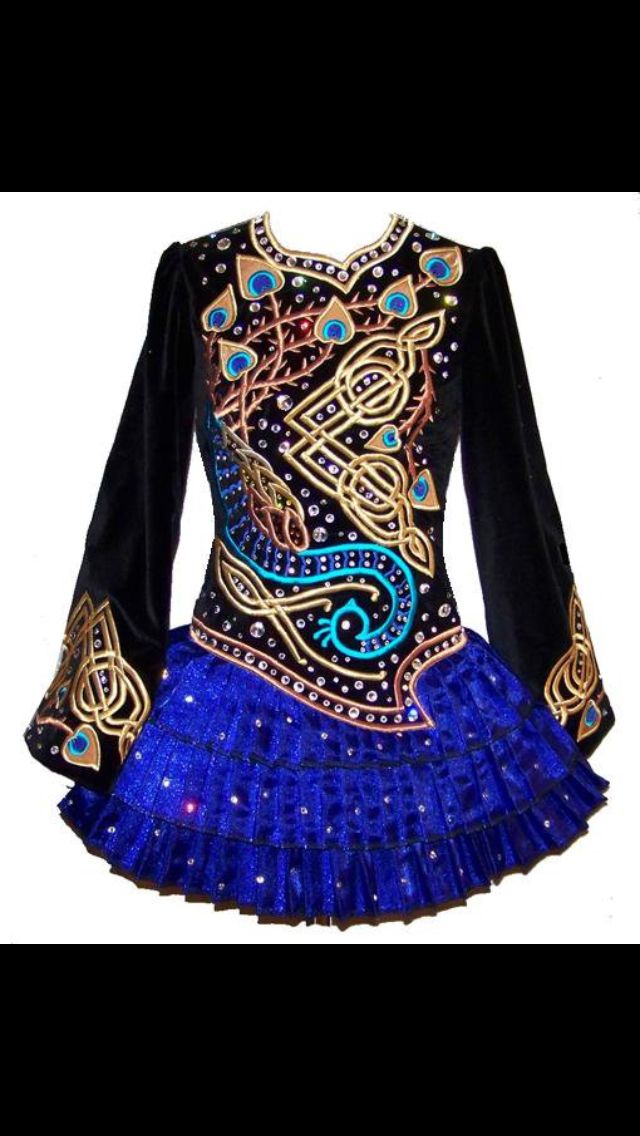 But in the same scenario. If your costume doesn't look like you run a small brothel in Chicago or like you just came from a gay parade in Amsterdam, then you're a sucker.
But in the same scenario. If your costume doesn't look like you run a small brothel in Chicago or like you just came from a gay parade in Amsterdam, then you're a sucker.
All photos are stolen from the above group, so you've probably seen them all. Every second dress can be safely thrown away from there. Luckily, there are really decent options out there, but there are so few of them that they get lost among clone dresses from Elevation or freak dresses from most other designers.
In Russia they make a very worthy design, although they do not always sew very high quality (dresses often do not sit well on dancers or behave badly during the dance itself), but the prices of our fashion designers are not boorish yet. In my posts with fashion, I usually try to choose those photos where not only the dancer is good, but also the dress is worthy.
Of course, we also make terrible designs, and such that all of the above will seem like baby talk. I'm not talking about inexpensive independent crafts, we are talking about purposefully sewn by a familiar seamstress according to a unique sketch and promoted everywhere.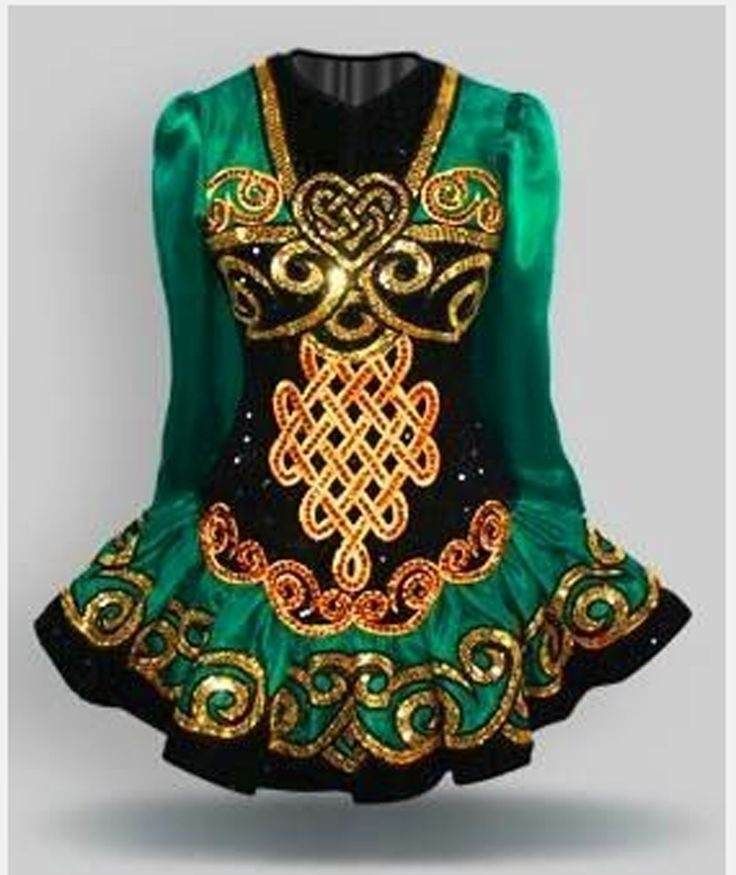 Unfortunately, for ethical reasons and corny because of the fear of death, I will not show these dresses, but who knows me closely and is aware of it. But maybe someday I will collect enough material and still show it to you. After all, why not.
Unfortunately, for ethical reasons and corny because of the fear of death, I will not show these dresses, but who knows me closely and is aware of it. But maybe someday I will collect enough material and still show it to you. After all, why not.
Well, yes, my costume is, of course, beautiful. Here, enjoy it again:
The color of Ireland is green. Green in Ireland is often combined with sunny red. Many Irish people have naturally red hair. Bright and colorful, like summer itself, is the Irish costume.
Way Home
Artist Barry Maguire
Ireland is a country with a rich and interesting traditional culture. Irish folk dances are especially famous. And the clothes of folk dancers of any country are always clothes associated with a folk costume.
On St. Patrick's Day, Irish dances may be performed all over Europe. And, of course, the United States, where many descendants of Irish emigrants live. The feast of Ireland's patron saint, Saint Patrick, is very popular today. The holiday color is green. Green is considered the main color in the Irish folk costume.
The feast of Ireland's patron saint, Saint Patrick, is very popular today. The holiday color is green. Green is considered the main color in the Irish folk costume.
Celtic motifs
The culture of Ireland is closely connected with the Celtic traditions. Modern Irish are the descendants of the Celtic tribes that once inhabited the vast territory of Western and Central Europe. Of course, in Ireland, as in many other European countries, the traditional ancient pagan culture was influenced by the adoption of Christianity. But, nevertheless, Christianity could not supplant older traditions.
Artist Barry Maguire
Any country, including Ireland, is what ordinary people, peasants, have been wearing for many centuries. Unlike the costumes of the aristocrats, which changed over the centuries from style to style - Romanesque, Baroque, Rococo, and so on, peasant clothing remained virtually unchanged.
Greensleeves
Painter Dante Gabriel Rosetti
Most often, a peasant European men's suit is trousers and a shirt, women's - a skirt and a shirt or a dress.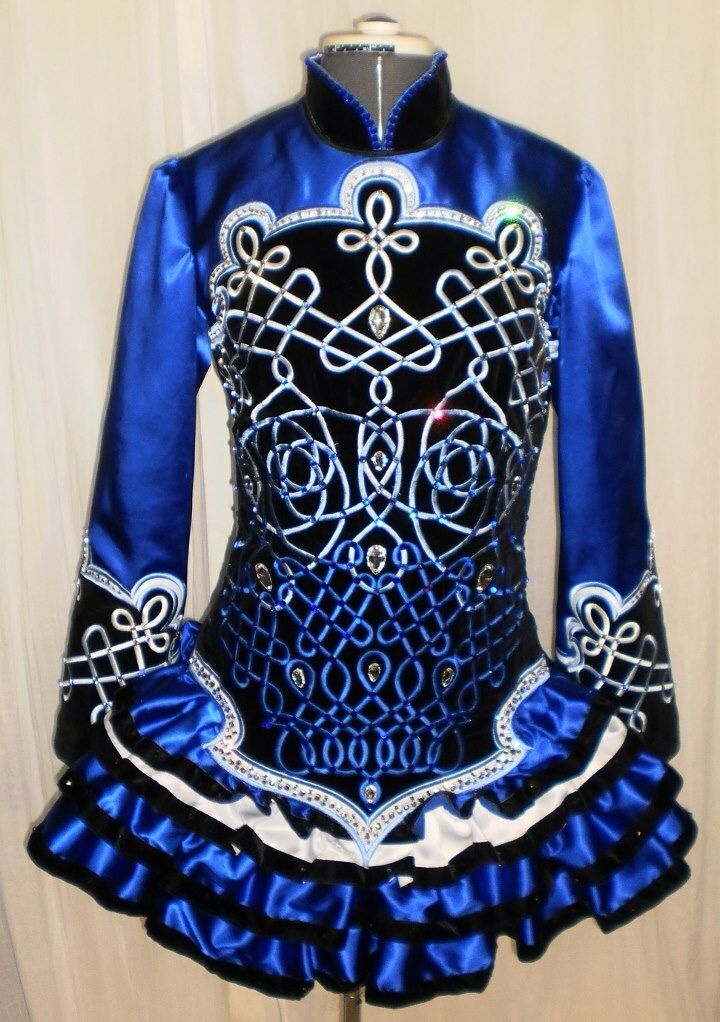 But at the same time, the peasants always decorated their festive clothes with drawings - ornaments. Pagan pre-Christian traditions were still preserved in the ornament. These could be patterns symbolizing the sun god, and patterns associated with the goddess of fertility, as well as amulets.
But at the same time, the peasants always decorated their festive clothes with drawings - ornaments. Pagan pre-Christian traditions were still preserved in the ornament. These could be patterns symbolizing the sun god, and patterns associated with the goddess of fertility, as well as amulets.
Irish costume ornaments are of ancient Celtic origin.
From folk clothes to national costume
The folk or national costume of Ireland itself appears in the 19th century, as well as the national costumes of other European countries. As a matter of fact, in the 19th century the concept of nations was formed in Europe. And the learned people of each nation begin to actively study the culture, history and traditions of their country. At the same time, much attention is paid to the study of the life and life of the common people.
Irish Dance
In the 19th century, namely in the times of , European thinkers and artists are no longer interested, in contrast to past centuries, in the heritage of Ancient Greece and Rome, the history of kings and their victories. In the period of romanticism, thinkers and artists go to the common people.
In the period of romanticism, thinkers and artists go to the common people.
And on the basis of the folk costume, that is, the clothes of ordinary people, but not everyday, but festive, national costumes are formed. So it is with the national costume of Ireland.
This comes with its own difficulties. Ireland has been under the influence of England for a long time. Also in Ireland, the Vikings once visited, who also largely changed the traditional clothes of the Irish. Thus, very little information has been preserved about the Celtic costume by the 19th century.
Mistake with kilt and fishing sweaters
In the 19th century, the idea that the Irish wore a kilt skirt appeared. This skirt is still found in the costume of dancers. The Irish kilt skirt, unlike the Scottish one, is not plaid, but plain, most often orange. Today, Irish dancers can also see a green kilt skirt. But later it turned out that in the VI-XVII centuries, the Irish did not wear any skirts.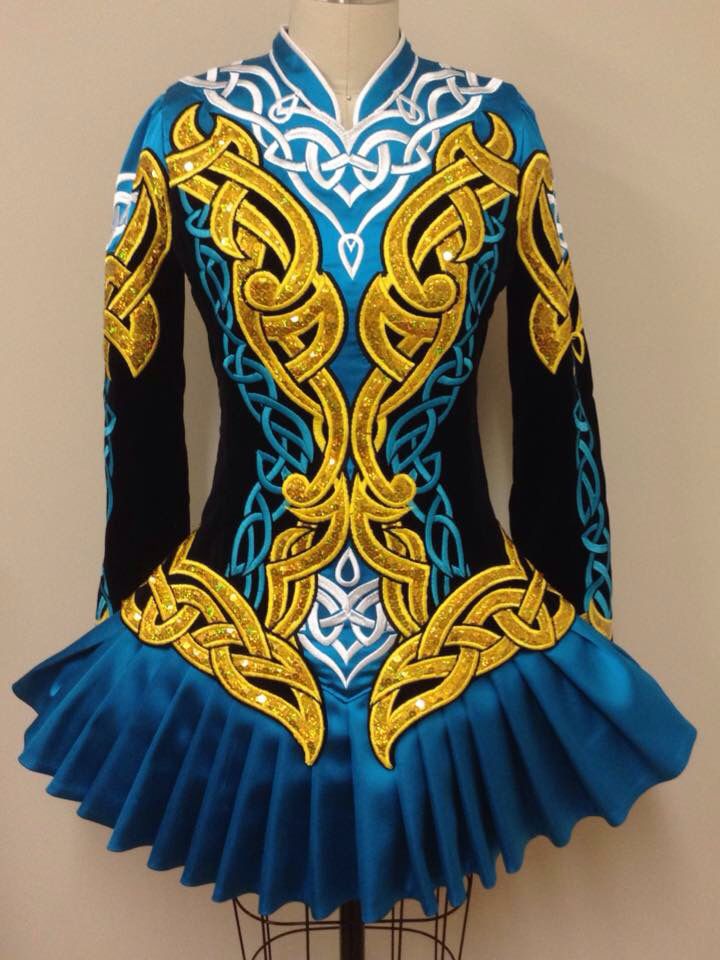
Vintage St. Patrick's Day card
Irish men's clothing of the 6th-17th centuries was a long undershirt. It was called Lane. Rich people wore two shirts. The top shirt was shorter. It was decorated with colorful embroidery. Linen shirts were sewn. Linen is a traditional fabric for the clothes of ordinary people almost all over the world. In addition to linen, another common material for peasant clothing is wool.
Trousers in Ireland appeared during the time of the Vikings. Initially, pants were made of leather, like the Vikings. Then they began to sew from linen.
By the 17th century, a sweater appeared in the Irish costume. Traditional Irish sweaters are called Aran sweaters, as it was in the Aran Islands that they were first knitted.
There is even a special style of knitting - Aran knitting. Aran knitting is knitting in which a pattern is formed by interlacing braids and crossing loops.
Vintage St. Patrick's Day Card
Aran sweaters were originally white or gray (today green sweaters can also be seen) and were decorated with ornaments with personal marks or initials of the person who wore the sweater.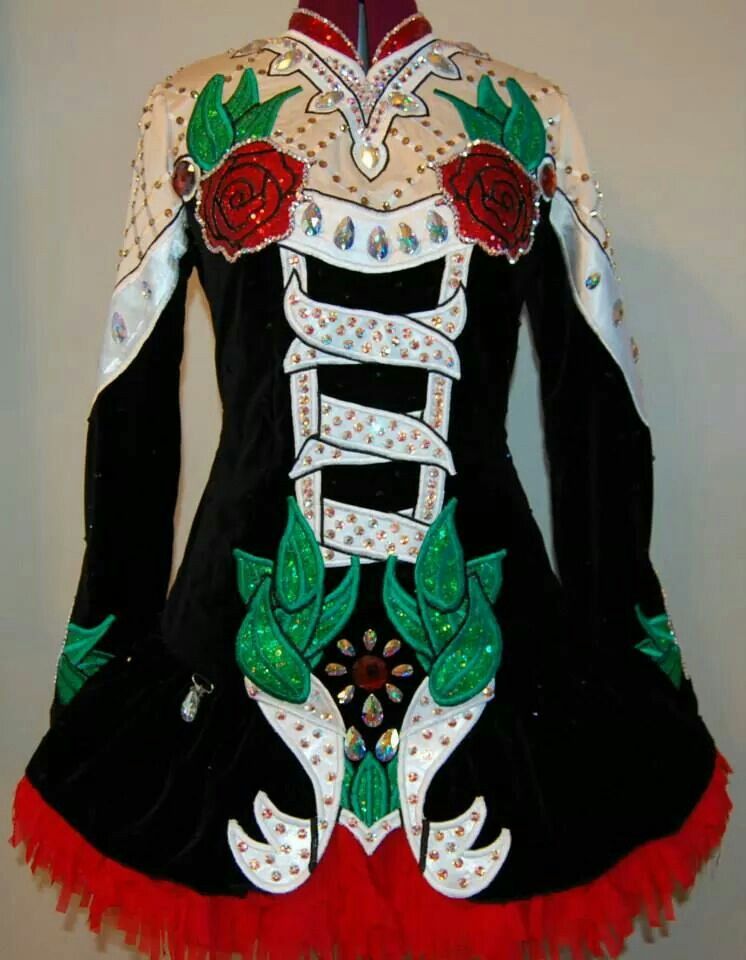 Initially, Aran sweaters were the traditional clothing of fishermen.
Initially, Aran sweaters were the traditional clothing of fishermen.
Another element of the Irish men's costume today is an elongated jacket or jacket made of thick material, which most likely appeared already in the 18th century under the influence of the townspeople's costume. Under a jacket or jacket today, Irish folk dancers wear either the sweater described above or a vest. On their feet they wear a kilt or short pants and woolen striped leggings. And, of course, an obligatory part of the Irish folk costume is a large cloth beret.
Red Celtic cloak bret
Another must-have for Irish folk costume is a woolen cloak with a voluminous hood. A cloak similar to a plaid has been worn since Celtic times. In the 6th-17th centuries in Ireland, both men and women wore such a cloak. This raincoat was called Bret. It was sewn from dense woolen fabric and fastened with a brooch on the shoulder or chest, or tied at the throat with a braid. Such a raincoat protected very well from winds and cold.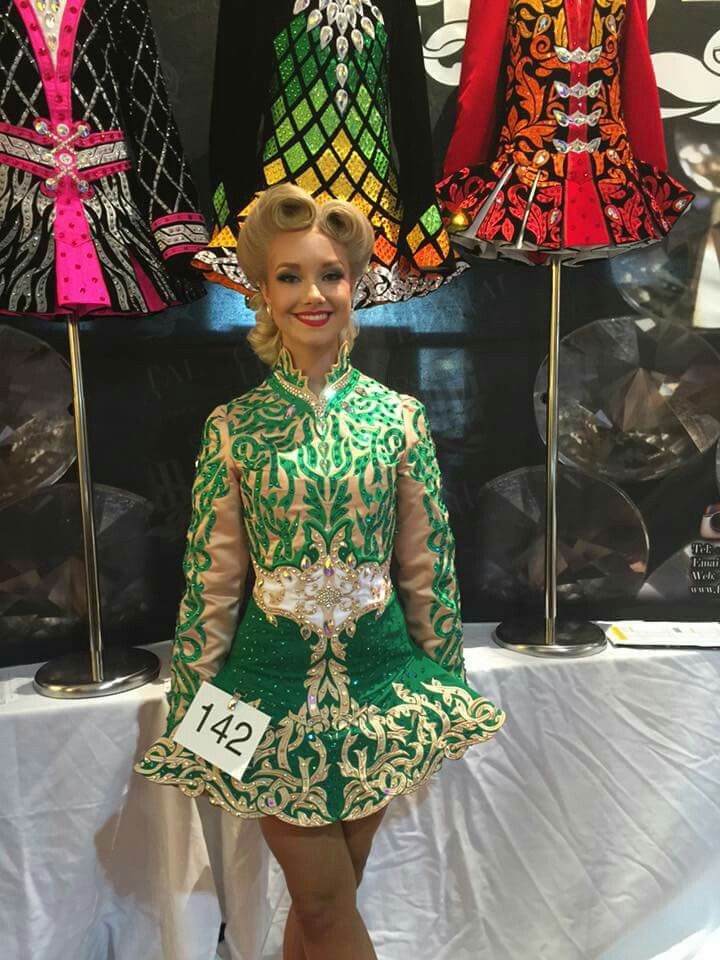 Bret's raincoats were plain - blue, black, gray, but most often red.
Bret's raincoats were plain - blue, black, gray, but most often red.
Vintage St. Patrick's Day card
Women's dresses in Irish national costume
Even less was known about the women's costume of Celtic times by the 19th century than about the men's costume. Today, women's folk clothing in Ireland is considered to be a dress with an accentuated waistline and expanding downwards. Irish folk dancers wear such dresses in plain green or with a striped skirt. Another element of the women's folk costume of Ireland is shawls decorated with a bright border.
Thus, in the 19th century, on the basis of historical data on the folk costume of Ireland, as well as under the influence of the development of interest in folk Irish dances, the national costume of Ireland was formed, which exists to this day.
Modern manufacturers of clothing and fashionable dance costumes provide a huge selection of this product: clothes for.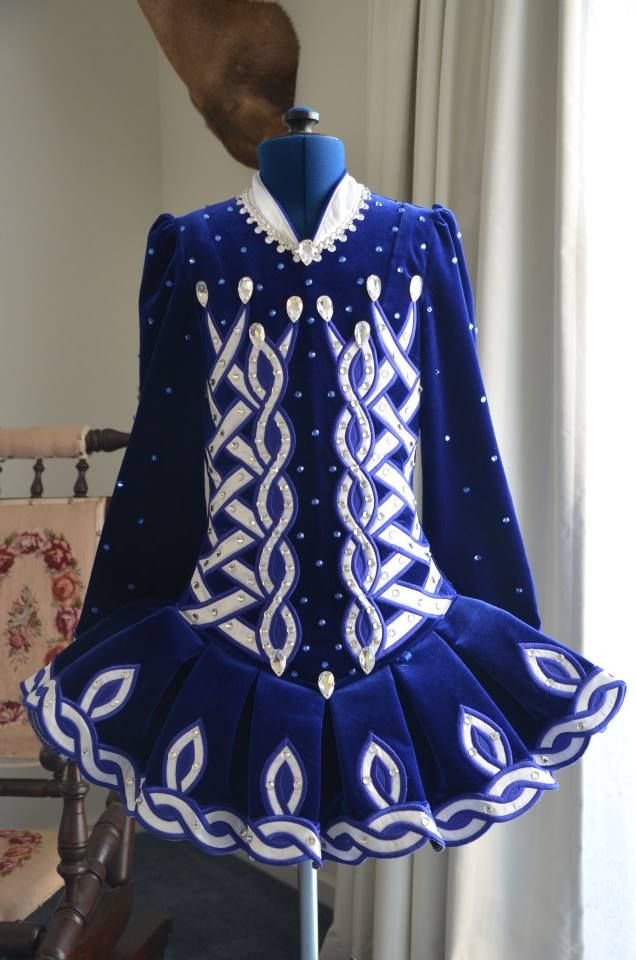 A large selection for different tastes are available in the markets, but the standard exists - after all, this is dancing! And the clothes for dancing should be standard.
A large selection for different tastes are available in the markets, but the standard exists - after all, this is dancing! And the clothes for dancing should be standard.
You may have often noticed that Irish dancing girls dance in short dresses, but at the same time with a wide skirt, on which these popular British patterns are lined (however, they are called Celtic there). In general, Irish dancers do not always use these clothes ... Usually, beginners do not use too wide a skirt, but for a real Irish dance, of course, a wide skirt is an integral part of clothing.
For girls, soft-soled slippers are mainly used. At the same time, slippers should not have any heels and, in general, the so-called "dance relief". - Also very often practiced soft and hard. More widespread in Europe received hard. These shoes attract buyers with their appearance and price, since the price of this product is much lower than for soft...
Irish dancewear for men - little difference. Usually they use tight trousers, shirts with wide sleeves and a vest.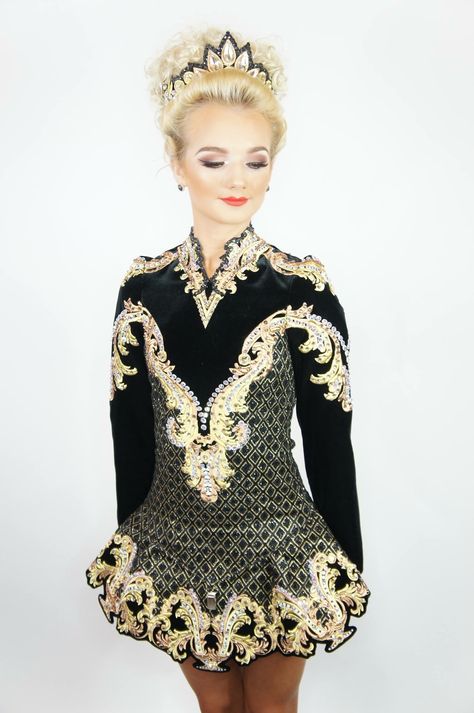 - Beginners very often use shorts, as it is much easier to dance in them. However, this will no longer be considered a real Irish dance ... From shoes, young people wear the same clothes as girls. Basically, of course, these are slippers, and some can wear hard shoes, for example.
- Beginners very often use shorts, as it is much easier to dance in them. However, this will no longer be considered a real Irish dance ... From shoes, young people wear the same clothes as girls. Basically, of course, these are slippers, and some can wear hard shoes, for example.
In general, the dancer's feet play the main role in Irish dance. Because almost all major and popular movements have always had legs. Basically, this is hitting the floor with the toe of the boot, hitting the shoes against each other and, of course, jumping. It is not worth making any movements with your hands. Since "it never happened that during the dance of the legs, the hands danced." It is this phrase that sounds today in thousands of forums and discussions - reviews on which are extremely positive (reviews about clothes).
It is very important that when choosing any product, you decide to use home clothes. Of course, then there can be no question of any real Irish dance ... Buy real Irish dance clothes at an affordable price!
Order Irish clothes according to your taste and design, choose the best style and color palette. - And in the end, dance a real Irish dance! You can be sure of the success of the first exit, since not all Irish dances are not difficult and beginners succeed the first time! You will succeed too! Forward!
- And in the end, dance a real Irish dance! You can be sure of the success of the first exit, since not all Irish dances are not difficult and beginners succeed the first time! You will succeed too! Forward!
It is always interesting to learn about the origin of the clothing of a particular people. All costumes differ in variety in style, colors and small details.
Until now, national attire is haunted by a new-fangled designer who seeks to modify them, while maintaining a stunning color. Irish traditional costume could not be an exception.
Ireland has created a truly chic outfit, but now there is a lot of contentious discussion about clothes. The fact is that the national costume of the Irish has long become part of history - the inhabitants of Ireland do not use it everywhere. Admiring a delightful outfit is possible only at festivals.
The formation of the national Irish costume was not influenced by the cultures of other countries, and this is a distinctive feature of the clothing of the proud Irish.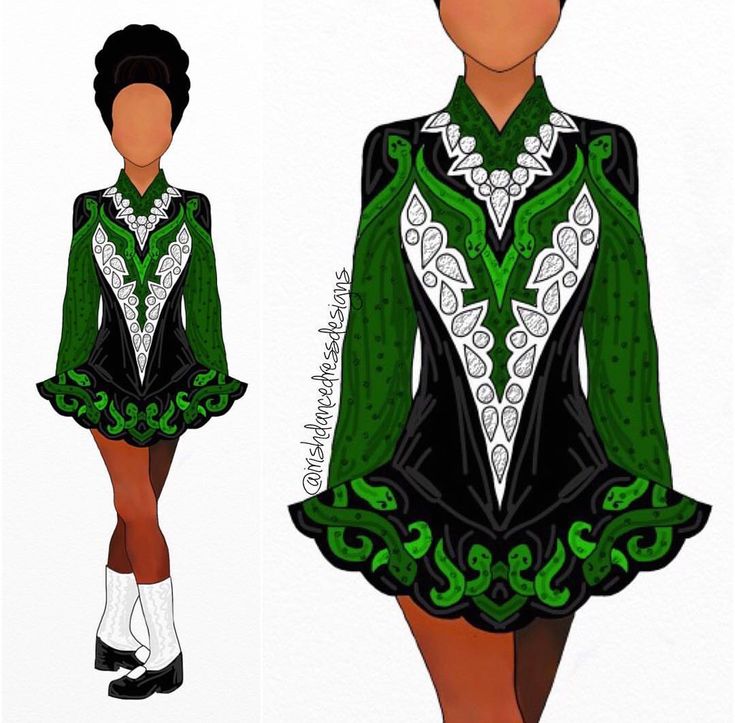
Many elements of clothing had to be adopted from seafarers and merchants from other countries, but the traditional costume of Ireland never adapted to the representatives of other peoples. Only England managed to make some adjustments.
Milestones
On the way to the appearance that people of our time can contemplate with pleasure, the Irish national costume had to undergo major changes.
- The Irish began to create their own costume in the sixth century. The outfit looked extremely simple - a linen shirt, a loose woolen cloak, the length of which reached the floor. The cloaks were equipped with large hoods.
- Over time, social stratification became more clearly visible in Ireland, and then wealthy families had the opportunity to stand out with the help of luxurious attire. The rich wore a different shirt, which was made from high-quality fabric. Most often it was silk or fine linen. It could not do without embroidery with gold threads.
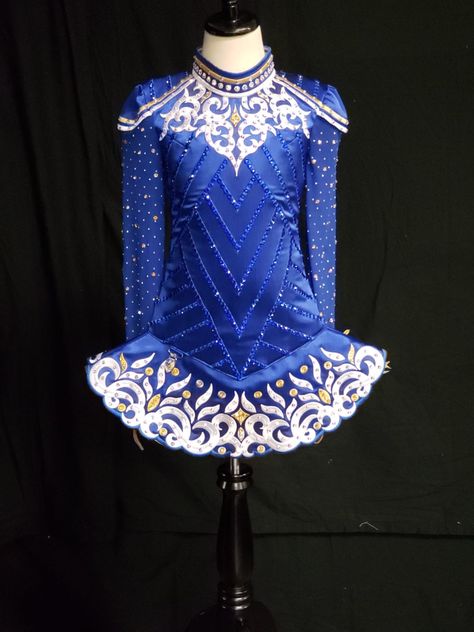 The higher the position of a person in society, the more difficult the clothes looked.
The higher the position of a person in society, the more difficult the clothes looked. - Not always a rich Irishman was allowed to wear what he wants. Depending on the origin and field of activity, the law dictated to the Irish people what color of clothing a person could use.
Specificity
The national costume of the Irish people has changed over the years. Pants were the first part of the wardrobe, but they were not invented by the inhabitants of Ireland themselves.
The Irish adopted seafarers' trousers.
Ireland has a very harsh climate. The raging icy wind, rain and damp air forced the freezing Irish to come up with such clothes so that they could escape the cold. Then there were the sweaters! An indispensable sweater was made from gray and white fabrics. Since they were made exclusively with their own hands, each product was distinguished by an original ornament.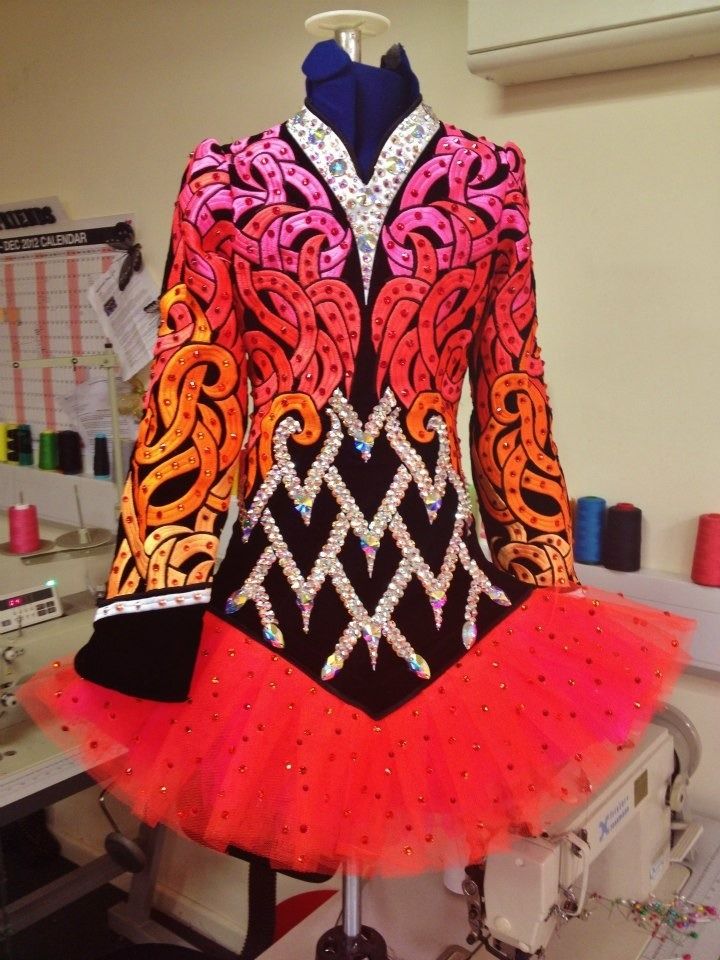
Patterns usually consisted of the owner's initials or some other personal signs and symbols.
Influence of England
For a long time Ireland did not submit to anyone, but over time the influence of majestic England began to spread throughout the country. The British did not interfere with the development of an original national Irish costume. On the contrary, they brought clothes into the traditional wardrobe, which helped the outfit to finally take shape.
The national costume of the Irish people acquired features characteristic of Europe at that time.
- Heavyweight jackets and long jackets are available. By skillfully combining these clothes with baggy sweaters, the Irish people were able to completely protect themselves from the cold.
- Large cloth berets were popular.
- Men could not imagine themselves without shirts designed in light colors.
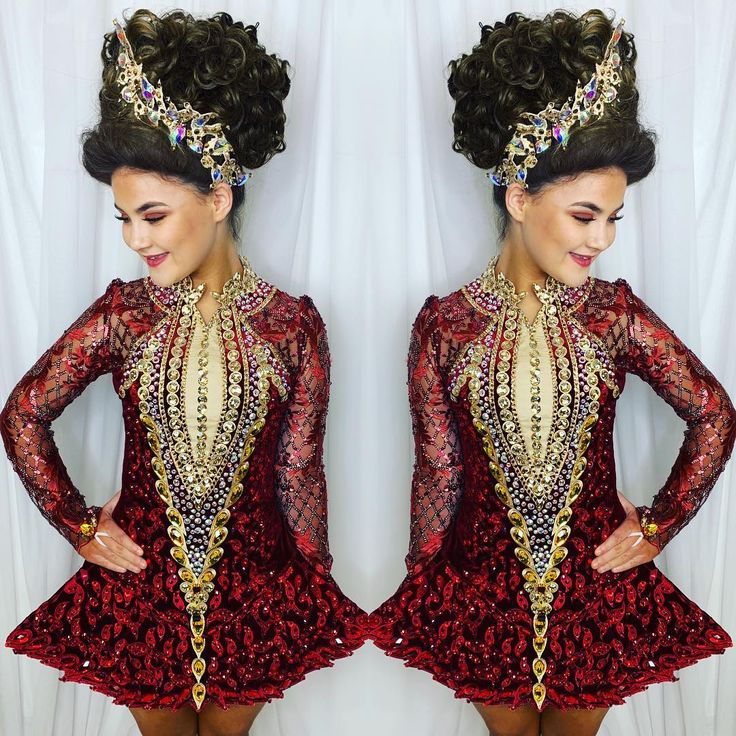 There were no collars.
There were no collars. - The Irish love the plain kilt skirt. Mostly it was possible to meet orange options.
During the reign of the English state, the robe of Ireland acquired a piercing green color. It is the green suit that pops up in the imagination of a modern person when it comes to national Irish clothes.
Women's costume
Girls have become one of the main decorations of the Northern country. The fame of Irish beauties spread throughout the world. Poets imagined Irish women as flowers grown under the gusts of a chilly wind. Dressed in a national costume, women became even more beautiful. Their beauty did not give rest to men.
Unfortunately, now there is little reliable information about what traditional women's outfits were. However, historians studying the culture of Ireland assure that every girl had a bright green dress.
The style of the robe was perfect - it helped to emphasize every natural dignity of the figure. At the same time, in no case could a woman be suspected of debauchery. The creators of the costume managed to combine two characteristics - seductiveness and modesty.
At the same time, in no case could a woman be suspected of debauchery. The creators of the costume managed to combine two characteristics - seductiveness and modesty.
Men's attire
Men boasted two standard sets of clothing.
- If an Irishman wanted to appear serious and courageous, he dressed in strict trousers and a jacket. Also, no man could do without a black tie. Thanks to this accessory, it was possible to easily create the image of an imperious, self-confident person.
- The second set expressed the brightness of the Irishman. Throwing trousers aside, men put on kilt skirts, the design of which was made in a checkered or striped pattern. The combination of green and orange shades showed the individuality of the people of Ireland. In such clothes, the Irish preferred to visit drinking establishments.
Traditional Irish Dance Dress P1
How we sew a school iri tradition.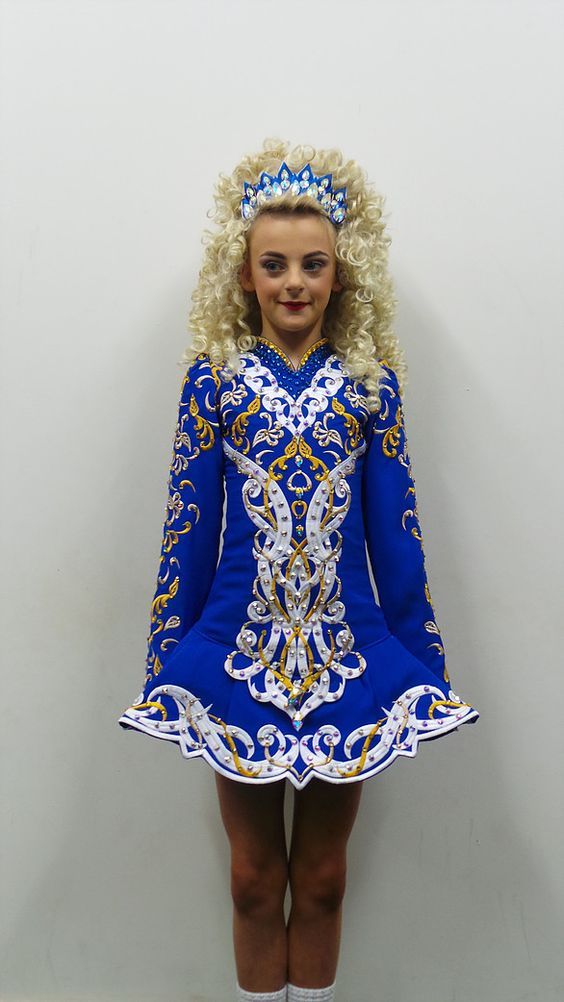 ch1.
ch1.
I'll tell you right away, my mother and I have no sewing education, all we have is experience - several years of tailoring various role-playing outfits. So - we sew by trial and error, orienting along the way.
So, after the Eastern European fashion, the need for school dresses crept up on us. She crept up and began to inevitably pursue, because Ksenya switched to primer and dancing in a "childish" form is already undignified. Before that, Sasha partially came out of the beginners, but he is a boy, it’s easier for him.
We decided to sew this dress (thanks to Marina Sidorovich for the drawing and consultations)
There were no problems with the choice of color, our preferences were formed even in the adult "childish" form, when we went to the first fashion - green with red, close to the usual children's fashion form , we have such skirts for beginner adults, a green skirt with a red piping along the hem.
The colors were chosen, a sketch was roughly developed - a green dress with red wedges, along the sleeves and hem, except for the central wedge, curls.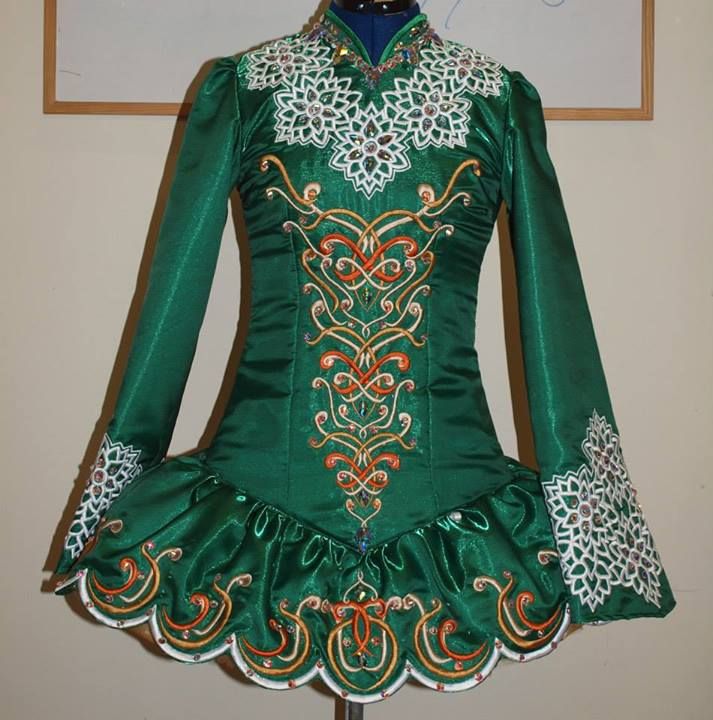 After much torment, they finally chose the fabric, settled on velvet - it looks good, it does not deteriorate from external influences like satin. There was a variant with fine wool, but it is simply impossible to find the wool of the desired green color, and you have to think about the next generations too =).
After much torment, they finally chose the fabric, settled on velvet - it looks good, it does not deteriorate from external influences like satin. There was a variant with fine wool, but it is simply impossible to find the wool of the desired green color, and you have to think about the next generations too =).
We had problems finding fabric, because we generally have problems with green fabrics. I had to go to Minsk in search, just the class was very successful. Cotton-based velvet is hard to find, and even more so green. We found only stretch, a little lighter than we would like and only in one place, but it was still impossible to pull with the search for fabric - the deadlines were running out, and after all, it was still tailoring .. Therefore, my sick fantasy gave birth to a stretch-velvet variant, glued with doubler on a thin calico base so as not to overcarry, the stretch stretches in general in all directions. In terms of fabric consumption, they were guided by a public opinion poll of dancers who sewed themselves.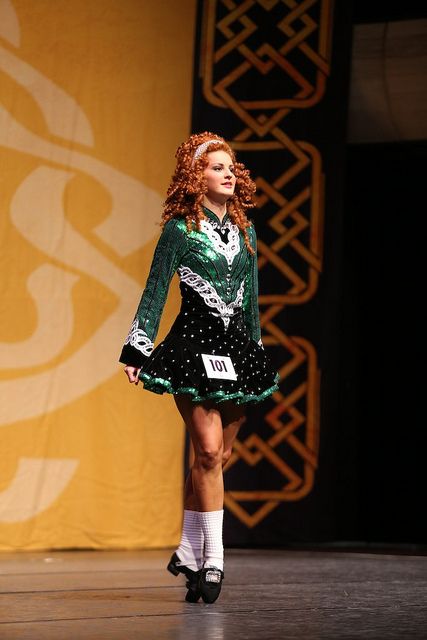 True, all the same, only two pieces were available, two and three meters with a width of one and a half meters. Therefore, we decided to sew two dresses at the same time and together (and not each one for himself, as they were going to).
True, all the same, only two pieces were available, two and three meters with a width of one and a half meters. Therefore, we decided to sew two dresses at the same time and together (and not each one for himself, as they were going to).
The pattern was made on the basis of the basic model from the book "Encyclopedia of a Young Family", 1987 (p. 525). (In general, we did a lot of this pattern, and an empire dress, and a crinoline, and everyday clothes). Good book
This is how the pattern looks like up to the waist
Since we were not sure if there was enough money for all ideas, we first made all the details on paper (except for the raincoat. I only remembered about it later). Here is the layout for one dress for the base color (valances in a different color), ten parts in total - bodice, two parts of the back (because there is a zipper on the back), two sleeves, a front center wedge, two side front wedges and two back wedges (it turned out that the rear wedges were wrong, but in fact they are larger than the front central one).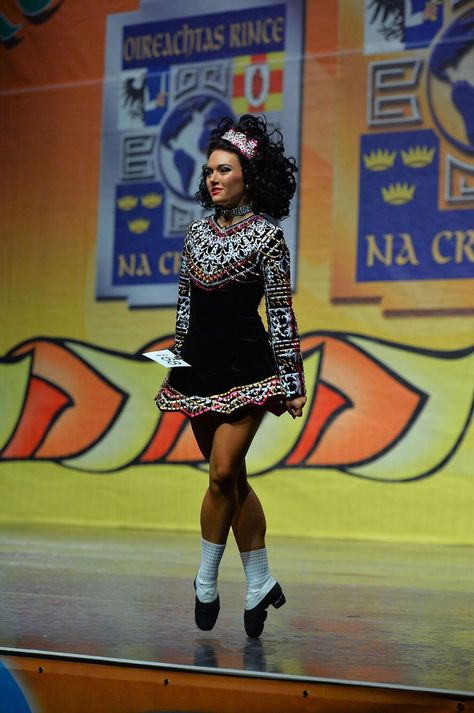
later, however, it turned out that stretch velvet should be cut in a straight line and only in one direction, so the layout has changed a bit. But not critical, because the layout for two fit on a piece of 3x1.5 m (excluding the raincoat) + a little from a piece of 2x1.5.
The bodice, the back and all the wedges were glued with a thin dublerin on a calico base. As a result, the fabric has not lost its flexibility, but has ceased to stretch in all directions. I procreated at the maximum temperature of the iron from the side of the dublerin, if you do not grab the edges of the velvet, then it's normal. Therefore, it is best to glue all the details first, and then just cut them out, because. when cutting, velvet dust is formed, which instantly melts and contaminates the soleplate of the iron.
After sewing up such a "sandwich", the extracts turned out to be quite plump, but on the body it looks normal. As long as everything is on point.
Let's see the front wedge.